The Opera Garnier Guided Tour
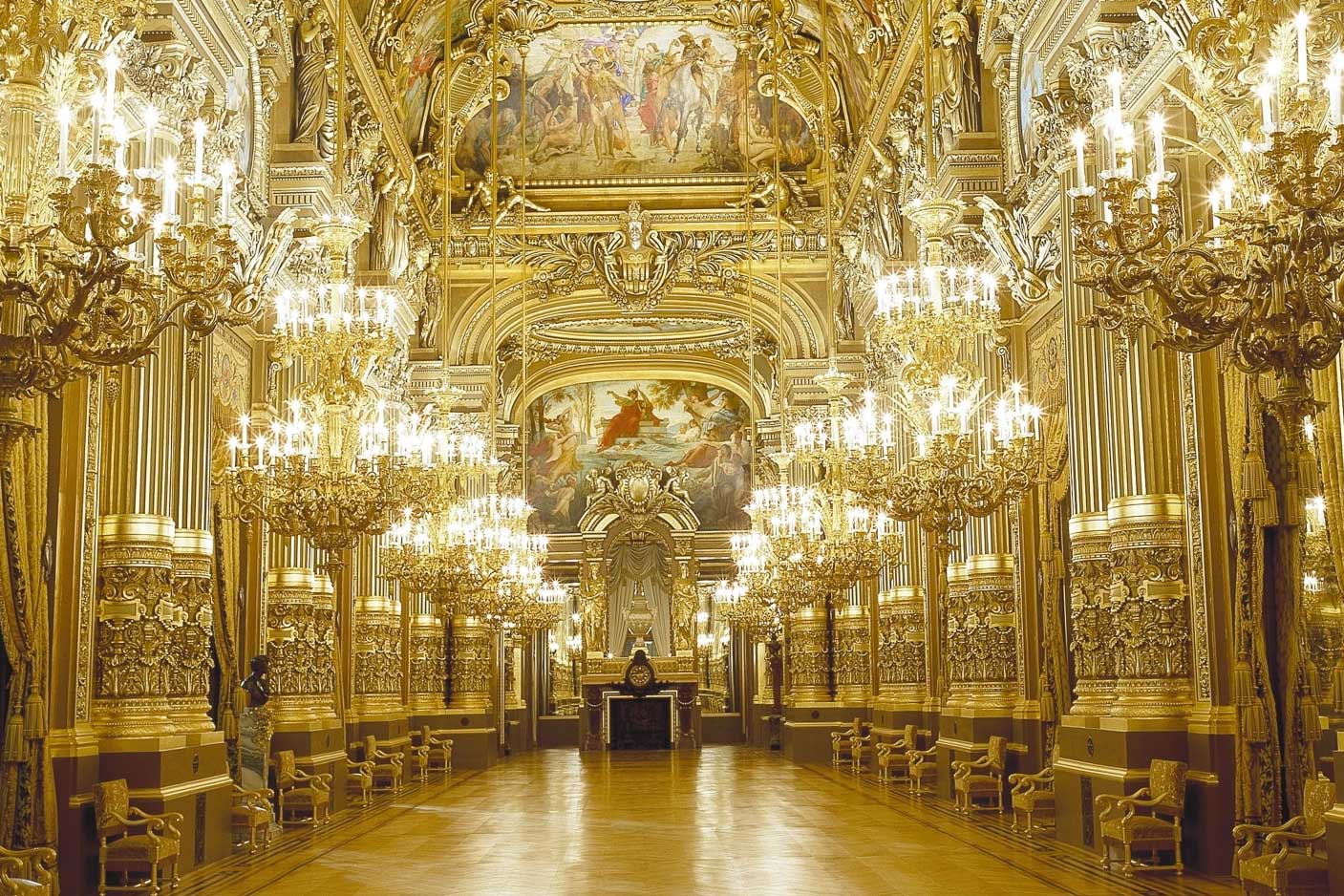
- Information
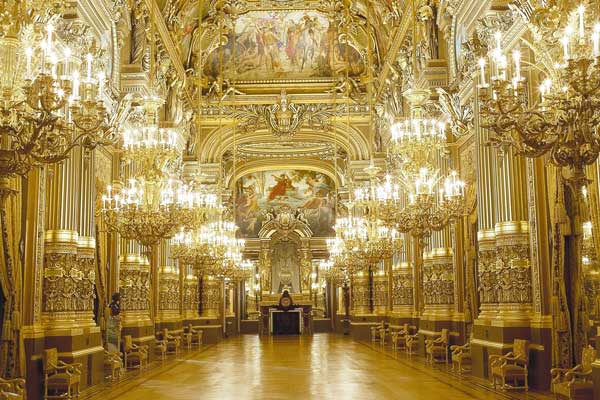
Theatre tour
Recommended for all ages
In French or English

Highlights: The Opera Garnier Guided Tour
Welcome to the most prestigious opera and ballet house in all of Paris! Book a tour with a professional guide to discover the historical and architectural wonders of the ornate Palais Garnier. Should you choose to visit the Opéra Garnier at 5 p.m., after its doors are shut to the public, your guide will take you on a journey following the footsteps of Erik – the famed Phantom of the Opera from Gaston Leroux's novel! Visit the Palais Garnier to uncover the secrets and myths of this palace that seems to transcend time itself…
Story: The Opera Garnier Guided Tour
Built in 1875 by architect Charles Garnier, the Palais Garnier is the largest opera house in Europe, housing more than 2,000 seats under its elaborate roof. As well as being regarded as the most prestigious of Paris' theatres, the Opéra Garnier is also one of the capital's most emblematic monuments, a museum in its own right with a spectacular selection of paintings, sculptures, and fascinating architectural features.
Your tour begins at the Rotonde des Abonnés, a glorious vestibule which once served as the audience entrance. Your guide will then lead you to the fascinating statue of the Pythia, and then to the Grand Escalier - a lavish split staircase with grandiose decor, featuring marble, onyx, copper, paintings, gilding, and mosaics. At its summit, you will then reach the Grand Foyer. You may find that its splendor and captivating use of mirrors and windows are reminiscent of the Hall of Mirrors at the Château de Versailles. Technical and artistic conditions permitting, you will also have access to the auditorium.
To make your visit to the Paris opera an exquisitely unique experience, you can choose to visit in the evening (5 p.m.), after the Palais Garnier is closed to the public. Your guide will take you on a tour in the footsteps of the Phantom of the Opera, the titular character from the celebrated novel by Gaston Leroux. As you discover the secrets and anecdotes of this historically and culturally rich palace, you will enjoy the rare privilege of having the entire monument to yourself, and exclusive access to the dressing room number 5 – that of the ghost himself. This tour offers you a rare opportunity to learn all of the facts and secrets about Paris' most revered (and most mysterious!) monument from an insider's perspective. What are you waiting for…?
Book a guided tour for your group of 10+ people!
Fancy sharing your trip to the Opera de Paris with friends? Look no further - Theatre in Paris offers guided group tours of this architectural relic! Indulge in an unparalleled journey through time with your closest companions and marvel as the secrets and surprises of this enchanting edifice unfold before your very eyes… a beautiful experience to share with friends and family. Enjoy reduced rates for larger groups - get in touch!
Contact us at [email protected] to make your reservation! If you are interested in booking for a group of 10 or more people , we ask that you please book at least 45 days in advance . For groups of any size, we strongly recommend booking in advance of your desired dates to guarantee your place. We’ll see you there…!
There are not yet any reviews for this show, be the very first to share a review by completing the following:
Opéra Palais Garnier
One of the most prestigious stages in all of France, the Palais Garnier was constructed between 1860 and 1875, designed by legendary architect Charles Garnier, who was selected among a handful of talented architects in a fierce design competition. The building itself is considered an artful masterpiece, and was one of the most expensive construction projects to come from the Second French Empire under the reign of Napoléon III. The elaborate use of different materials to lend a lavish multicolored facade was typical of many of the works under the rule of Napoléon III, and features sculptures of various figures of Greek mythology. The official inauguration in 1875 was attended by the Mayor of London and Amsterdam, the King Alphonso XII of Spain, and hundreds of members from European high society.
The interior was meticulously designed with intertwining corridors, alcoves and landings to allow for easy movement of large numbers of people; complete with a grand marble staircase and the grand foyer, acting as the drawing room for all of Paris high society and covered in gilded paintings. The auditorium itself is in a traditional Italian horseshoe shape, seating 1900. The stage is the largest in Europe and can accommodate 450 artists, revealed by the opening of the legendary painted curtain. Garnier himself designed the 7-tonne chandelier sparkling above the audience. In 1896, one of the many chandelier counterweights broke free and killed a concierge, the incident that inspired the scenes in the 1910 novel-turned-musical The Phantom of the Opera . The space above the auditorium in the copula dome was once used strictly for cleaning the chandelier, but has since been transformed into a space for opera and dance rehearsals.
The legendary building was initially deemed the Academie Impériale de Musique, yet with the fall of the Second Empire and the start of the Third Republic, this was aptly changed for the Academie Nationale de Musique, which we see written across the exterior facade to this day. Garnier envisioned his design and the transformation of the surrounding area, and to this day the opulence of the Second Empire lives on in this living monument. The avenue de l'Opéra remains the only large Parisian corridor without trees, as Garnier explicitly prevented Haussmann from adorning the street with trees, arguing that his Palais Garnier was to be the main focus. Palais Garnier became the official name in 1989 with the construction of the Opéra Bastille, and the venue now houses primarily ballets.
Fast facts Capacity: 1,979 Handicap Accessible: Yes – in order to guarantee access to specific locations, we ask that you make your reservation at least 15 days before the performance. Air conditioning: Yes Heating: Yes Coat Check: Yes (free service)

How do I get to the venue?
The Palais Garnier is accessible by the metro station Opéra (Lines 3, 7, 8) and Auber (RER Line A). Our hotline can be reached in case of difficulty finding the venue weekdays from 10 am to 7pm Paris time. For details, we invite you to consult the map above.
What do I do when I get to the venue?
We invite you to arrive 30 minutes before the beginning of the tour. Once you have entered the building, the meeting point with your guide is located at the Rotonde des Abonnés. Please present your voucher to the guide upon your arrival.
How long does the tour last?
The guided tour of the Palais Garnier Opera House lasts 1 hour 20 minutes.
Is it a guided tour of the Palais Garnier for tourists or French people?
Both! The Palais Garnier is an iconic monument of Paris, visited as much by travelers as by the local public. Tours are offered in French or English, usually at different times. The language is indicated in the price list after you select a day and time to visit when you make your reservation, so be sure to check your choice.
Is it possible to visit the theatre and backstage?

A Worthwhile Guided Tour: Paris Opera House (Palais Garnier)
I much prefer taking guided tours when I travel because the learning is interactive. I often start to daydream when the self-guided audio-tour I’ve been given goes on and on and on. After a while it just becomes boring and I zone out. That’s why I especially liked taking the guided tour of the Paris Opera House (Palais Garnier), which, according to Tripadvisor, is #4 on the list of top attractions in Paris attracting almost 480,000 visitors a year.
The in-depth, expert commentary about the building’s creation, architecture, and history was one thing. But being able to ask questions and discuss things with our tour guide made the experience more meaningful and worthwhile and our tour guide really brought the building and history to life. If you’re going to do a guided tour, do it at the Palais Garnier, considered one of the world’s grandest theatres.
*This post contains affiliate links. If you make a purchase through these links, I get a small commission at no extra charge to you. It helps support the running of this website and I do appreciate your help.*
1. Palais Garnier Opera House Tour, Paris
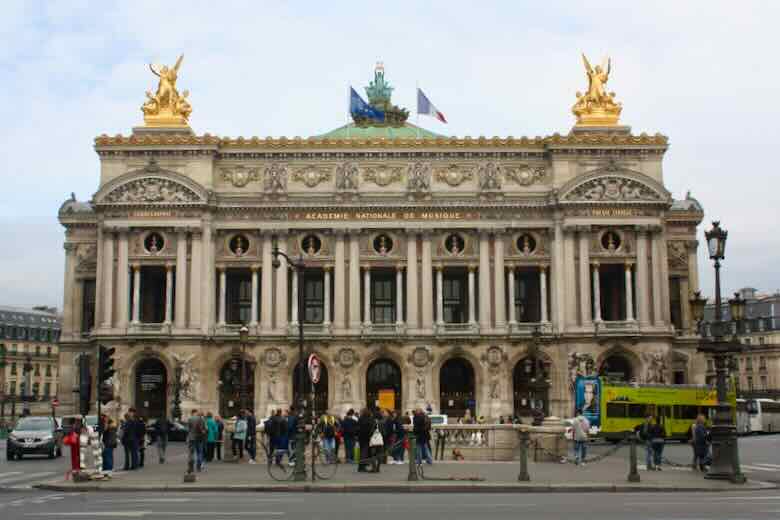
About a month before visiting the Paris Opera House, my niece, her husband, and I ordered tickets online for the guided tour. We chose one of the morning, English-speaking tours. In addition to French and English tours, there are also Spanish-speaking tours with a maximum of 30 people. The cost of the guided tour is currently 18.5 € and the self-guided visit is 14 € where you get access to the public areas and any exhibitions going on.
With the self-guided tour, you can pay an extra 6.5 € to get a tablet which will provide you with a 1 hour multi-media tour through the opera. So it’s actually quite reasonable to take the guided tour.
We arrived 30 minutes before the tour was to start to exchange our voucher for our tickets. We then had to go through security and join the other ticket-holders in a waiting area, the Rotonde des Abbonées.
Consider Booking Tickets To See A Show At The Palais Garnier : Really keen on seeing a ballet, a concert, an opera, or even demonstrations of the Paris Opera Dance School at the Palais Garnier? Check out what’s available and the best prices here: Performances At Palais Garnier .
(a) The Rotonde des Abbonées
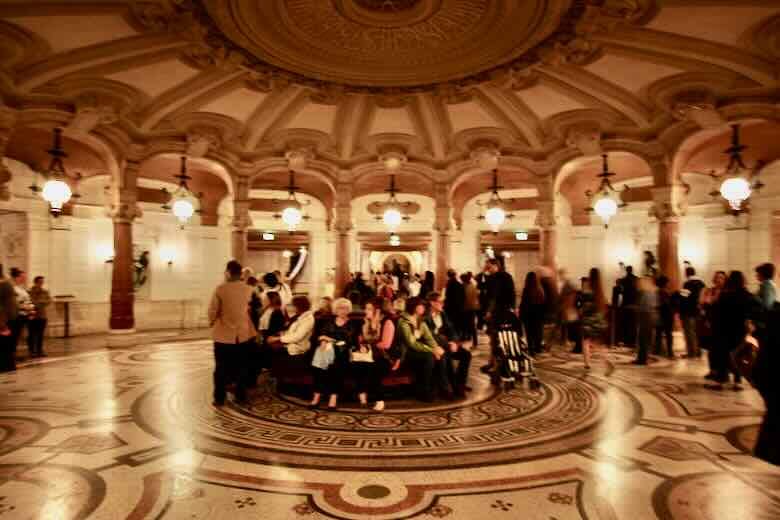
The Rotonde des Abbonées is a circular room or vestibule that has pillars on the perimeter, mosaic tiles on the floor, and a very decorative ceiling. Throughout much of the Paris Opera there are symbols of Greek mythology and as you head to the Grand Escalier (Grand Staircase) you pass by La Pythonisse (or Pythia), priestess of the god Apollo greets you.
Interesting fact #1 : the Pythia sculpture was done in bronze by Marcello who was actually a woman, Adèle d’Affry, the Duchess Castiglione-Colonna.
You might also like to read these posts: – What’s So Special About The Wallace Fountains In Paris? Free Water – Where You’ll See Famous Arches In France – Best Views Of Paris? From The Pantheon Dome
(b) Special Headphones
Our tour guide spoke excellent English and explained how the opera house can get very busy and crowded and rather than try to speak over all the voices, she would speak into a microphone and we would be able to clearly hear her using special headphones. These headsets amplified her voice but her words remained very clear. And no matter how close or far we were from her, we could hear her.
We did have to provide her with a piece of identification (ie. license or passport) that she held onto in exchange for the headphones. This is not uncommon when you borrow audio-guides at museums.
During our 90 minute tour, was informative and provided interesting commentary. Of course, she elaborated on the Phantom of the Opera and parts of the story that were true and not true. She took us to various areas and rooms and gave us time to take photos, wander around a bit, and ask questions.
2. History Of Palais Garnier
She began our tour by telling us some stories about the opera’s history. Napoleon III was on a mission to reconstruct and modernize Paris, adding sewers, creating grand boulevards and more light to the area. This was done with the help of Baron Haussmann.
A competition was established to choose a design for the new Opera House. There would be 2 phrases where applicants would be narrowed down to 7 in the 2nd phase. Architect Charles Garnier was one of 7 finalists and after revising his project, it was finally selected as the winning design. He began construction of the Opera in 1861.
The Paris Opera house was one of the most expensive buildings to be built at a cost of 7.5 million francs.
Interesting fact #2: the Opera House was so expensive that the government had to borrow over half of the money (4.9 million francs) from wealthy entrepreneur, François Blanc, who managed Monaco’s Monte Carlo Casino.
Palais Garnier was finally completed January 5, 1875. Electrical lighting was installed in 1881. Up until then gas lighting was used. The opera house was originally called Salle des Capucines but became known as the Palais Garnier, named after the architect.
Interesting fact #3 : during the construction, water kept seeping into the basement, and eventually a pond was formed and Garnier decided to create an artificial reservoir or pond to hold the water.
Interesting fact #4 : in 1896, a part of an enormous chandelier—a counterweight—broke free and fell, killing one person. In 1910, author Gaston Leroux used the area of water or “lake” of stores as well as the chandelier incident as inspiration for his famous story, Le Fantôme de l’Opéra (The Phantom of the Opera). The story and Andrew Lloyd Webber’s musical of the same name has certainly made the Palais Garnier even more famous.
The Paris Opera House is one of the largest and opulent opera houses in Europe, seating almost 2000 people. It became a national heritage site—“Monument Historique“— in 1923.
3. The Highlights Of The Palais Garnier
We were brought to various rooms and areas in the building, including the famed auditorium, where you can see the famous painting that Marc Chagall did on the ceiling. The style of the architecture throughout was eclectic with a mix of Greek, Baroque, Renaissance, and Beaux-Arts styles.
(a) Grand Escalier (Staircase)

As you climb the Grand Staircase from La Rotonde des Abbonées, you are presented with additional staircases and landings which take you to the different floors, salons, and foyers. The staircases are made primarily of white marble with additional added coloured marble columns (balustrade) supporting the railings. There are two female sculptures, dressed in robes, on each side of the entrance to the orchestra and balconies.
This whole area was for socializing before the performance. Spectators were surrounded by broad staircases, painted ceilings, and elaborate chandeliers.

Newsletter community members get access to free exclusive content like this bonus, “Top 10 Photo Locations In Paris” cheat sheet. Sign up now!
(b) Ceilings

Remember to look UP in the Opera house where ever you are because you’ll see elaborate ceilings and enormous chandeliers. The ceiling above the Grand Staircase was done in 4 panels with scenes from Greek mythology by Isidore Pils (1815-1875).
Interesting fact #5: part way through the painting of the ceiling, Pils became ill and his students (many who became famous in their own right), had to finish his work.
(c) Grand Foyer

The Grand Foyer is quite impressive and ornate. It reminds me of Château de Versaille’s Hall of Mirrors where the light streams through the many windows and illuminates the many chandeliers, gold painted pillars and walls, grand mirrors, and the colourfully decorated paintings on the ceiling by Paul-Jacques-Aimé Baudry (1828-1886).
(d) Salon du Glacier
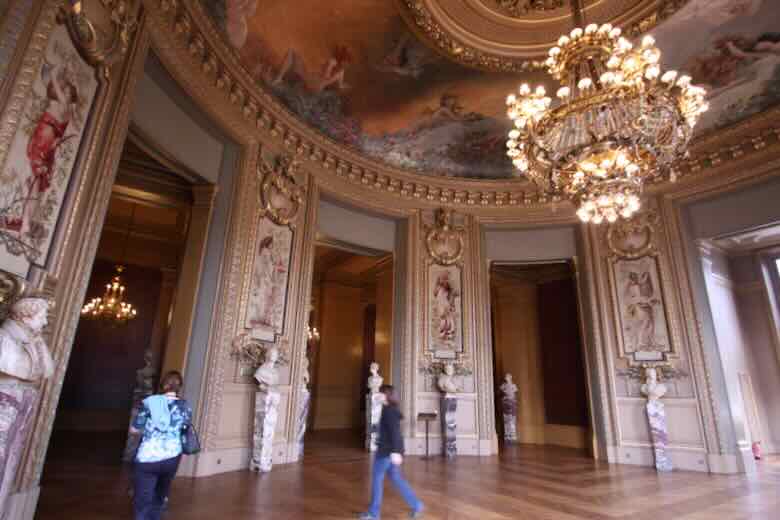
The Galleria du Glacier is a long hallway featuring elements and designs of the Belle Époque and it leads to the Salon du Glacier, a rotunda that was opened after the opening of the Opera House. It has another large chandelier and an decorated ceiling painted by Georges Clairin (1843-1919). In this area there are also marble busts, tapestries of hunting and fishing scenes and paintings of dancing Greek Bacchantes.
(e) Library-Museum Of The Paris Opera
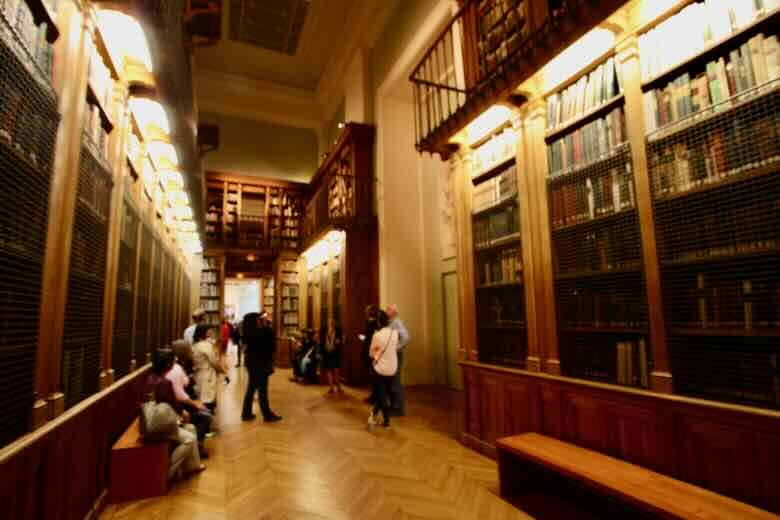
Quite surprising to many of us was that the Paris Opera is also a library-museum (Bibliotèque-Musée de l’Opera de Paris). There are many sites that belong to the Bibliothèque nationale de France (National Library of France) including the Richelieu Library which I recommend visiting so you can see the magnificent Labrouste Reading Room (the Salle Labrouste).
This particular library and museum contains hundreds of thousands of documents, paintings, photographs, letters, and other items which date back hundreds of years.
(f) Auditorium: Marc Chagall’s Painting On The Ceiling
One of the items on display in the Library-museum is actually the initial ceiling for the auditorium. It was painted by Jules-Eugene Lenepveu and was called, “The Muses and the Hours of the Day and Night”.
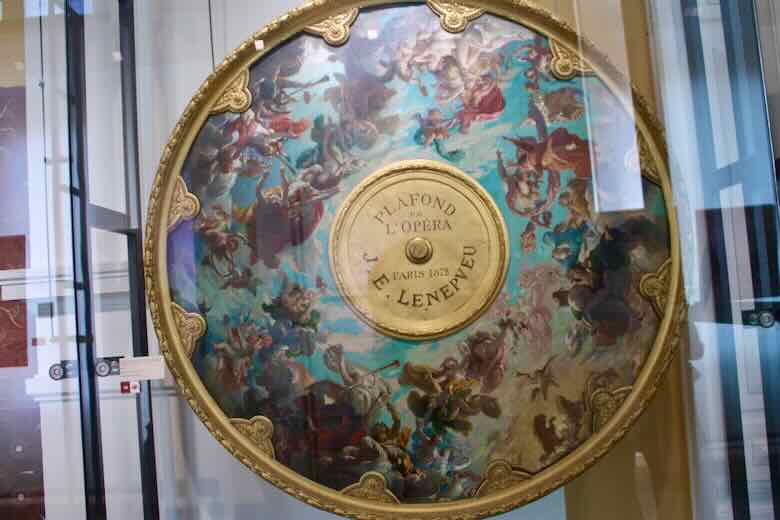
Interesting fact #6: Lenepveu’s painting was considered too old-fashioned and in 1964, French Culture Minister, André Malraux, commissioned artists Marc Chagall to paint a new ceiling. This is the painting that is there today; however, there continues to be controversy about the painting and whether it is appropriate for its surroundings, where many consider it too modern.
The chandelier in the centre has 340 lights, weighs 8 tons, and is made of bronze and crystal. At the time it cost 30,000 francs. Even the chandelier had controversy. There were complaints that the chandelier obstructed the view and Lenepveu’s painting of the ceiling by those sitting in the box seats on the fourth level.
There is NO guarantee that you will have access to the auditorium on the self-guided or guided tours as there could be rehearsals going on. We were fortunate to be able to visit it and sit on the very plush seats.
Our tour also allowed us to “peak” into one of the opera boxes) which are located on the side or facing the stage called loge de côté and loges de face)—-a separate room where 4-6 guests can watch a performance in the privacy of their own “space”. You might also be able to visit box #5, which is the Phantom’s box in the story. The plaque on the door, “Loge du Fantôme de l’Opera” indicates the box is reserved for the Phantom.
4. Attend A Performance At The Paris Opera House
We didn’t really have much time to gaze around the horseshoe-shaped auditorium; however, many years before this tour, I did attend a ballet with a friend.
When we arrived at the Opera, we couldn’t get a ticket for a tour, but we could get last-minute tickets to see a performance by the American Ballet, so we bought tickets. Our box was very high up and we had it all to ourselves. I will be very honest and say I had to leave early. It was in the summertime and the heat was just too much. (Remember, hot air rises!) I was getting faint! It was a long time ago and there wasn’t air conditioning.
Does the Palais Garnier have air conditioning today? I have heard yes, however, if you are on one of the highest levels it can still get stuffy and hot in those boxes. The only downside of seeing the ballet was that we didn’t really get to see all the salons, rooms, and areas of the Opera House, which is why I did the tour many years later.
5. The “Other” Opera House: Opera Bastille
There is another opera house in Paris. In 1989 the Opera Bastille was constructed and is located at Place de la Bastille. This is now the location for operas. Palais Garnier is primarily used for ballet performances.
Between 1994 and 2007 major renovations were made on the Palais Garnier to modernize the stage, improve the electrical components, and reinforce the structure and foundation. The architecture is stunning and the Opera House Paris tour is well worth the 18.5€ . On the Palais Garnier website you can see that their calendar indicates the number of available spots on the tour and quite often many are available.
6. Paris Opera House (Palais Garnier)
- Visit The Palais Garnier (website) : https://www.operadeparis.fr/en/visits/palais-garnier
- Hours: open daily 10:00-5:00 (and 10-6 pm in the summer) except for afternoons when there are performances
- Most guided tours: are at 2:00 pm.
- Cost for the guided tour tickets : 18.5€*
- Reduced rate: if you have a ticket from the Musée d’Orsay or Musée Gustave Moreau that is not greater than 8 days old you can save a few Euros on the cost of your ticket.
- To check out what shows you can see and the best prices, click here : Performances At Palais Garnier .
- Address : Place de l’Opera
*Prices are subject to change.
Check out my post about booking tours in advance for more information: Trip Advice Part 1
TRAVEL RESOURCES Booking.com and Expedia : are the companies I use for finding accommodations. : is super for booking apartments and houses. AutoEurope : is the only car rental supplier that I will use–with the best prices, and they will refund the difference if the price goes down. : offers an easy way to book train tickets. Get Your Guide and : Both offer tours, city cards, tickets, airport pickups, and so many other things you’ll need at your destination. -this is the company I use when I want a physical SIM card -offers eSIMS and get great reviews
Pin to your favourite board on Pinterest
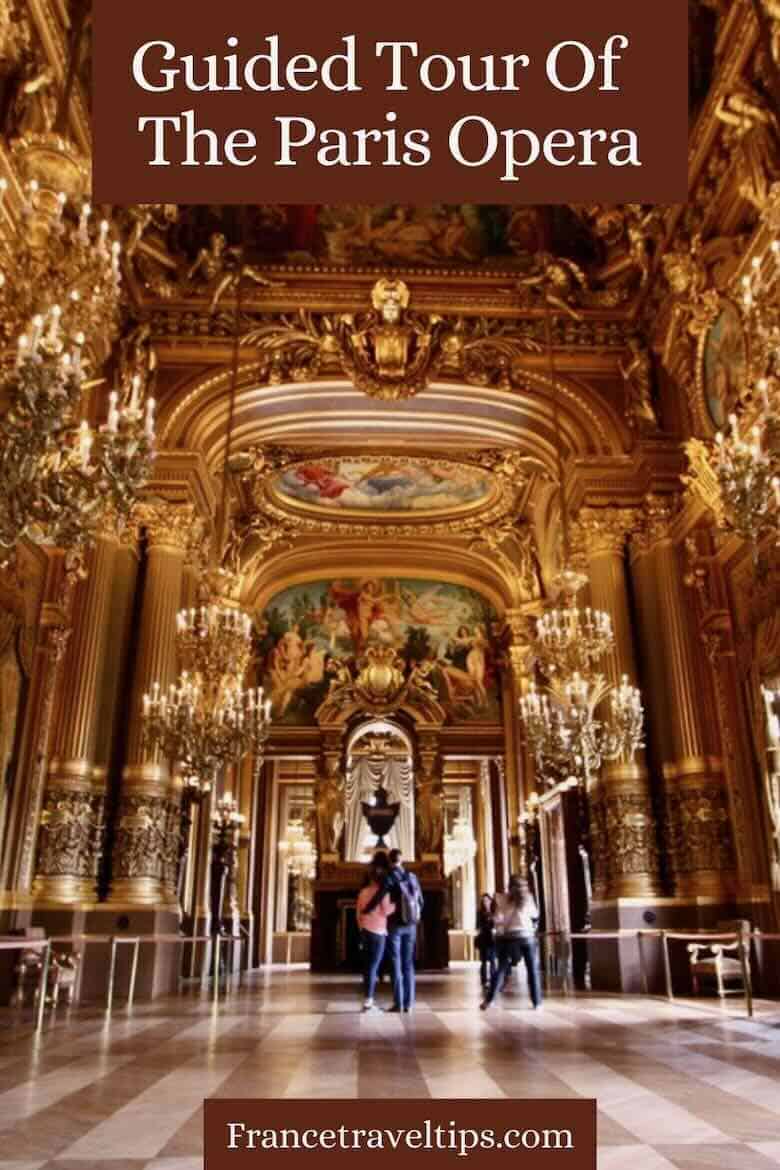
Share this post:
I've travelled to France over 35 times and love sharing my tips and unique experiences not always mentioned in travel guides. You can learn more about me by visiting my About Page . Subscribe to join my newsletter. Community members get access to free exclusive content and bonuses.
Similar Posts
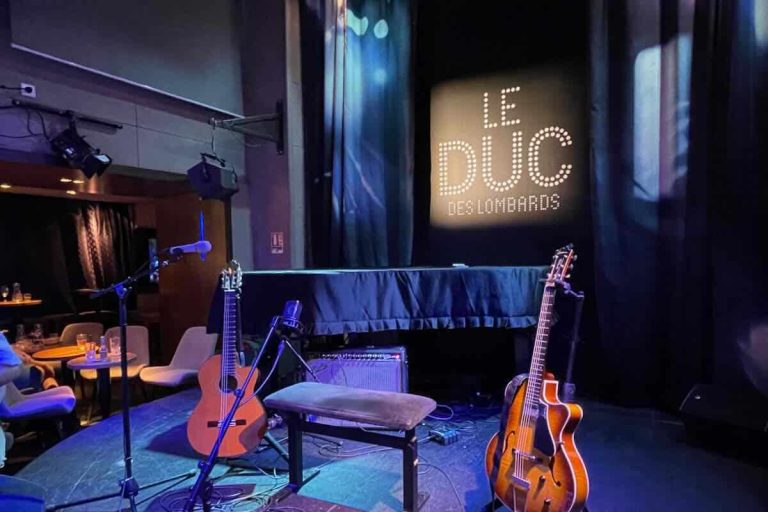
Best Jazz Club In Paris? Le Duc des Lombards For Live Music

Marie Curie Museum In Paris: Tribute To A Great Scientist
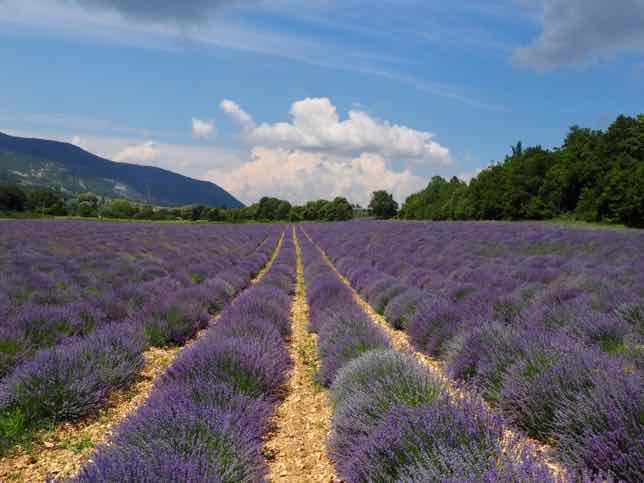
Where You Can Find Lavender In Provence
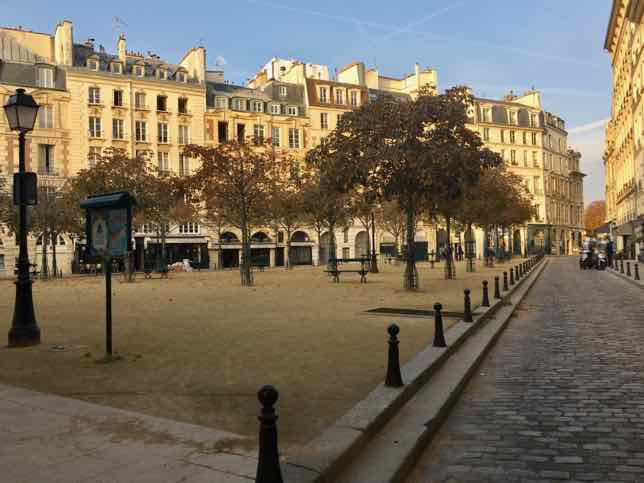
Learning About Paris While You Run: With Paris Running Tours
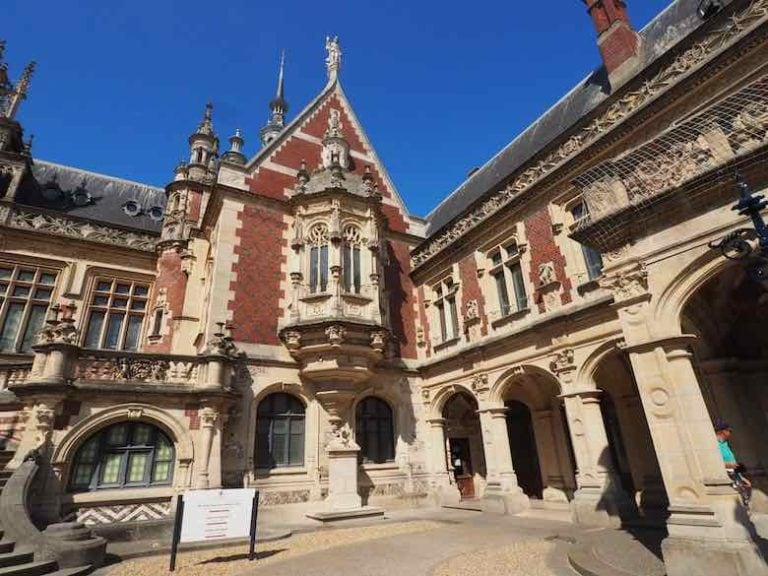
Tour And Tasting At Palais Bénédictine In Fécamp
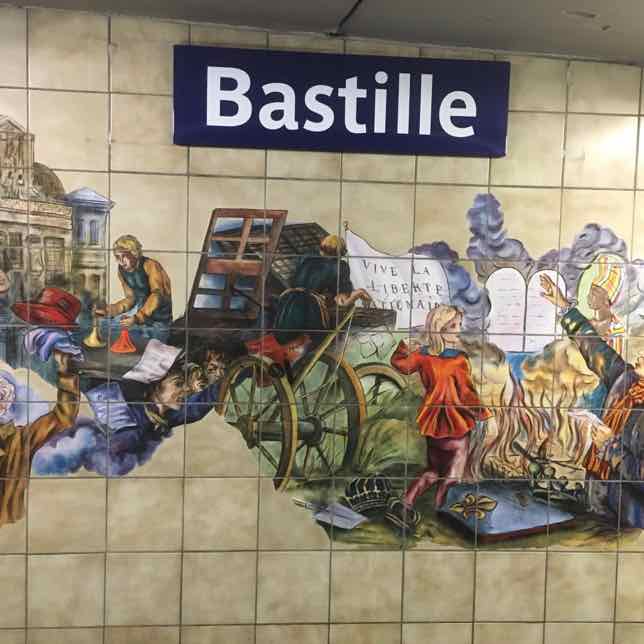
Remains Of The Bastille: 4 Spots You Likely Overlooked
Leave a reply cancel reply.
Your email address will not be published. Required fields are marked *
Visitor's Guide to the Opera Garnier in Paris
19th-Century Historic Building
:max_bytes(150000):strip_icc():format(webp)/profilepic-CTraub-5b6ff65d46e0fb00505577c1.jpg)
TripSavvy / Taylor McIntyre
Seating 2,200 people, the imposing Opera Garnier in Paris —also known as the Palais Garnier or simply the Paris Opera—is an architectural treasure and essential spot for the city's ballet and classical music scene.
Designed by Charles Garnier and inaugurated in 1875 as the Academie Nationale de Musique—Theatre de l'Opera (National Academy of Music–Opera Theater)—the neo-baroque style Opera Garnier is now the home of the Paris ballet. This does create some confusion for many tourists (ballet in the opera theater).
For anyone hoping to enjoy a Parisian Opera rendition of La Traviata or Mozart's The Magic Flute, the city's official opera company relocated to the starkly contemporary Opera Bastille in 1989.
Location and Contact Information
The Palais Garnier is located in Paris's relatively central 9th arrondissement, more or less directly north of the Tuileries Gardens and the adjoining Louvre Museum. It's one of the crowning attractions of the Opera-Haussmann neighborhood; one of Paris's most coveted shopping districts and the hub of major department stores like Galeries Lafayette and Printemps.
To make a morning or afternoon of it, you can visit the Opera, take a stroll around the old department stores, and have lunch in one of the gorgeous old 1900 brasseries in the vicinity (such as Cafe de la Paix, right across from the Opera). Then wander through the grand old streets in the vicinity—an area that's considered one of the crowning jewels of Haussmann's remodeled Paris.
- Address: 1, place de l'Opera, 9th arrondissement
- Metro: Opera, Pyramides or Havre-Caumartin
- Website : https://www.operadeparis.fr/en
Access, Opening Hours, and Tickets
Visitors can tour the main premises of the Opera Garnier during the day and visit the site's museum, either on an individual basis or as part of a guided tour.
Opening Hours
10 a.m. to 4:30 p.m. (September 10th to July 15th); 10 a.m. to 5:30 p.m. (July 15th to September 10th). Closed January 1st, May 1st. The cashier closes 30 minutes before the official closing time.
Ticket prices for ballet and other performances vary. Current performances at the Opera Garnier change so be sure to check to see what is upcoming.
Food and Dining
A recently opened restaurant situated on the Palais Garnier's eastern side (simply called "L'Opera") offers good-quality cuisine for breakfast, lunch, or dinner. Fixed-price menus are available at limited times.
Like This? Read These Related Features
Make sure to read our complete guide to Paris for music lovers , which gives you an excellent overview of the city's best venues, annual festivals, and more.
Music fans of all persuasions will love the Philharmonie de Paris, the latest newcomer to the city's art landscape and offering an eclectic program of musical performances, from classical to the world to rock. Meanwhile, if you want to enjoy contemporary opera in Paris, check out the boldly modern charms of the Opera Bastille.
Finally, for traditional French "chansons," dance, and late-night reveries check out our guide to the best traditional cabarets in Paris, from the Moulin Rouge to more avant-garde (and less expensive) revues like the Zebre de Belleville.
Top 15 Monuments and Historic Sites in Paris
All About the Jardin des Tuileries in Paris
Top 15 Things to Do at Night in Paris
Taking the Roissybus to or From Charles de Gaulle Airport
Luxury Shopping in Paris Boutiques and Stores
9 Places for Jewish History in Paris, From Museums to Memorials
A Self-Guided Tour of Parisian Architecture
May Events in Paris: Festivals, Sports & More
Paris for Music Lovers: A Complete Guide to Venues and Festivals
Review of Context Travel Walking Tour: The Making of Modern Paris
All About the Yves Saint Laurent Museum in Paris
The 7 Best Places for Shopping in Paris
Les Invalides in Paris: The Complete Guide
The Top 15 Things to Do in Bordeaux, France
18 Best Free Things to Do in Paris
Fragonard Perfume Museum in Paris
Visit The Palais Garnier
Almost 150 years old and classified as a historical monument since 1923, discover a dazzling and unrivaled place, in the very center of Paris: the Palais Garnier.
Discover a unique and prestigious place in the heart of Paris
Individual rates.
23.00 €
16.50 €
Reduced Rate*
Under 10 years
10.00 €
26.00 €
Single rate for visits after closing
Free for children under 4 and accompanying disabled people. *Under 25s, disabled people, seniors (over 65s), jobseekers, students.
Several tours are available. Consult our tour descriptions to book the time slot corresponding to the tour of your choice.
Group rates, click here
Practical information
Doors open at 10am. Please arrive 30 minutes before your scheduled visit.
Luggage is not accepted on the site and no left luggage is available for security reasons. Scooters, rollerblades, skateboards and electric scooters are strictly forbidden in the Palais Garnier.
Mystery visits: The visit is not accessible to people with reduced mobility after 5 pm.
Access to the auditorium may be impossible for reasons beyond our control.
Discover the world's most beautiful opera house on one of our guided tours
Discover a unique and prestigious place in the heart of paris: the palais garnier. several visits are to be discovered: intermezzo visit to the palais garnier: through the rooms of the opera accessible to the public, discover the extraordinary history of the palais garnier, a monument of architecture and a total work of art. length of visit: 1 h 30 - (any time slot other than belle époque). visit palais garnier in the belle epoque: go back in time with charles garnier, experience the atmosphere of the temple of social life in the 19th century, let yourself be transported and join the dance length of visit: 1 h 30 - (usually between 11 h 30 and 15 h 30). visit the mysteries of the palais garnier (after closing): discover all the secrets of the paris opera in this visit outside opening hours to the general public. in a cozy atmosphere, discover or rediscover a timeless place. length of visit: 1h15 - (after 5pm closing time)., the palais garnier: a hymn to magic.
Initiated by Napoleon III after an attempted attack and inaugurated in January 1875, it was after 15 years of work carried out by Charles Garnier, an architect unknown at the time, that the Palais Garnier was born. Today, this building, also called Opéra Garnier is one of the most emblematic monuments of the 9th arrondissement.
Spread over an area of 11,000 m², this eclectic style building will charm you with its many influences: Louvre Museum, Palace of Versailles...
Enter the largest opera house in France and enjoy its famous grand staircase, the Bassin de la Pythie or its sumptuous grand foyer and lounges.
Also discover...

Printemps Haussmann
See all tours in île de france.

La Défense district
See all culture tours, how to get to the palais garnier, address palais garnier 1 rue auber 75009 paris access metro: opera / chaussée d'antin (l3 / l7 / l8) rer: auber bus: 20, 21, 22, 27, 29, 42, 52, 53, 66, 68, 81, 95 parking: haussmann galeries lafayette 75009 paris , explorez l'opéra garnier avec vos élèves grâce à nos visites guidées , visite scolaire cycle 1 : .
Conçue pour les élèves de maternelle entre 3 et 6 ans, cette visite scolaire de Cycle 1 permettra à vos élèves de découvrir le Palais Garnier par une expérience sensorielle riche, en plaçant l’observation au centre de la visite. Celle-ci leur apprendra à mobiliser le langage en les poussant à mettre des mots sur leurs émotions, leurs sentiments et leurs impressions. Des mises en situation leur permettront d'apprendre et de découvrir en jouant, à travers les grandes notions en cours d’acquisition à l’école : les formes, les couleurs, les sens.
Durée de la visite : 1 h 30
Public : Petite, moyenne et grande section de maternelle (3 à 6 ans)

Visite Scolaire Cycle 2 :
À l'âge où l'apprentissage de la lecture émerge, initiez vos élèves à la musique en leur expliquant que comme un livre, la musique se lit, se joue et narre des récits envoûtants. À travers cette expérience captivante, vos élèves exploreront l'univers fascinant de l'art qui élargira leurs horizons artistiques et stimulera leur imagination. Faites découvrir à vos élèves l'univers de l'opéra et son vocabulaire riche tel que : le ballet, la salle de spectacle, la scène, la fosse d'orchestre, les chanteurs lyriques et bien plus encore. En plus de son architecture spectaculaire, explorez les œuvres picturales et sculptées du Palais Garnier qui enrichissent cet art immémorial que représente l'opéra.
Durée de la visite : 1 h 30
Public : Classes de CP, CE1, CE2
Visite Scolaire Cycle 3 :
Explorez avec vos élèves les multiples domaines de l'expression artistique à travers notre visite scolaire de cycle 3. Découvrez l'éclectisme des arts et les représentations allégoriques qui éveilleront leur curiosité et enrichiront leur compréhension du monde artistique. Au cours de cette excursion captivante, vos élèves seront initiés aux représentations allégoriques de la musique et de l'opéra, des muses inspiratrices aux cariatides symboliques de la Tragédie et de la Comédie.
Plongez dans l'histoire fascinante du Second Empire et du contexte de la construction de ce chef-d'œuvre architectural qu'est le Palais Garnier. Explorez les mythes envoûtants d'Orphée et d'Eurydice, représentés dans le Grand Escalier. Découvrez également la légende d'Apollon et d'Hermès, qui a donné naissance à la lyre, symbole intemporel de la musique. En plus de nourrir leur esprit d'histoire et de mythologie, vos élèves comprendront les notions élémentaires propres à chaque forme d'expression artistique, de l'organisation de l'espace par l'architecture à l'expression des sentiments à travers la musique.
Public : Classes de CM1, CM2, 6ᵉ
To book a school visit, please contact our reservations department:
For further...
The Arop, Association for the Outreach of the National Opera of Paris, offers you unique private tours of the Palais Garnier. The latter reveals its most secret places to you, such as the "Lac de l'Opéra", the sewing workshops or the mysterious "castans room".
The funds collected through the sale of backstage tours are used to finance the activities of the Opéra national de Paris: shows, tours, educational projects, or even the purchase of equipment for the workshops.
Find all the information by clicking here or by downloading the brochure here
And discover the Arop here: https://arop.operadeparis.fr/



Experience Parisian Opera Culture at the Palais Garnier
Things to do in Paris Palais Garnier
Palais Garnier, also known as the Opera Garnier Paris or simply the Paris Opera is an architectural jewel in Paris with a fascinating history and prime status in Paris’s ballet and classical music milieu. An ode to Parisian architecture, the Palais Garnier is an enchanting inspiration for many and undeniably one of the most distinguished and grand opera houses in the world. The Palais Garnier is home to the Paris ballet, so anyone hoping enjoy a Parisian rendition of La Traviata or Mozart's The Magic Flute, you know where to head!
Before you set off to tour the opulent Palais Garnier, here are a few quick things you’d like to know. A brief history of the Palais Garnier, how to get the best Palais Garnier tickets , whether a guided tour or self guided tour works better and other details about the location, timings and how to get there.
Quick Jumplinks to Navigate the Guide
Palais garnier history, palais garnier tickets, inside palais garnier paris, palais garnier tour, self guided tour, expert guided tour.
- All You Need To Know About Visiting Palais Garnier - Hours & Directions
Palais Garnier Visitor Tips
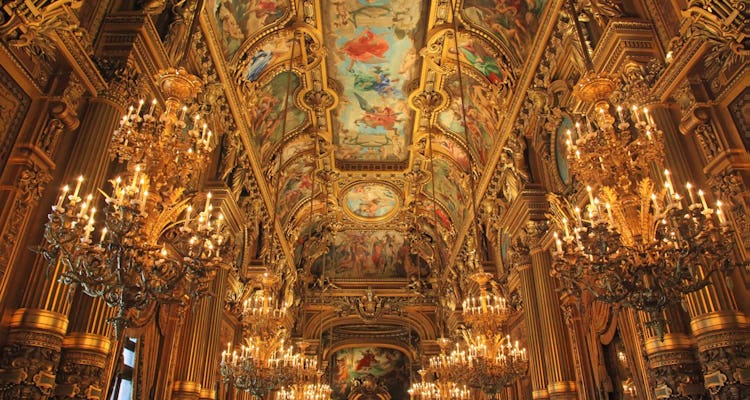
Palais Garnier’s history dates back to 1860, under the auspices of Emperor Napoleon III as a part of civic planner Baron Haussmann’s plan to renovate and transform all of Paris. A contest was organised to attract proposals for the construction of the Palais Garnier. Out of the 171 proposals submitted, Charles Garnier a little-known 35-year-old architect won the comission to build Paris’s Opera House.
Charles Garnier’s winning architectural plan devised mounting a spectacle a within a spectacle, in lieu with Napoleon III ‘s bourgeoisie tastes. The intention was to keep the Palais Garnier as a place for the wealthy and powerful where the rich would aspire to be spotted. This was keeping in mind France’s late 19th century, post-revolutionary, industrialized society. The Palais Garnier is a blend of architectural styles and the freedom endowed on Charles to experiment with a totally atypical dimension allowed this to manifest. In the late 19th century French society, one did not go to the Opera to view the mastery and grace of artists but to show off your wealth and power; to be aroused.
After 15 years of construction plagued by setbacks like the 1870-71 Franco-Prussian War and Siege of Paris, the Paris Commune, ultimate fall of France’s second Empire, and an 1873 fire the Palais Garnier was inaugurated on Januray 5, 1875. At the time it opened, Palais Garnier was the world's largest theatre and opera house. The Opera Garnier was part palace, part temple, part administrative center; a space where money was the new king, the new power, the new god.
The Palais Garnier till today remains an iconic symbol of Paris, not just for its magnificent façade and lavish interior, but for the era it represents: a France that had weathered a century of disruption and revolution. Viewed through this lens, Palais Garnier sure feels like a ‘sign’ of its time.
If you're looking for discounted tickets to the Palais Garnier, simply click on the Tickets tab below and book them via Headout. You can opt for a guided tour or simply purchase entry tickets and experience the Opera culture of Paris. A definite must while in the City of Lights!

Self Guided Tour of the Opera Garnier
• The Museum of the Opera • The sun and moon salons • Step over the grand staircase • Access the temporary exhibits of the Opera
Price - €12

Guided Tour of the Opera Garnier
• 90-minute tour of the Opera Garnier with access to the different areas. • English guided tour with official guides allowing a more interactive and educative experience.
This spectacle of this crowning attraction of the Opera-Haussmann neighborhood starts long before the curtain for the ballet rises. Here’s a summary of the emblematic areas at the Palais Garnier and a short glimpse of its elegant interiors.
The Exteriors

The exteriors of Palais Garnier is your coup d'œil into the realm of pomp and refinement that Charles Garnier manifested. Every inch of the building’s facade is a unique harmony between the sculpture, painting and architecture. The building dazzles with its balconies in onyx, golden statues of Apollo, smooth marble pillars, its delicate frescoes and rich gilding. To get the best view of its exteriors, walk further from the front steps to Avenue de l’Opéra till you can consume the whole of Palais Garnier, from top to bottom in all its glory.
Grand Staircase

The Grand Staircase is the first thing that commands your attention upon entrance. It is an exquisite piece of engineering marvel endowed in pink, green and white marble. Charles Garnier said it best when he proclaimed, “The opera is the staircase”. The staircase is flanked by 30 large single piece marble columns. Follow your eyes from the columns to the ceilings and meet the stunning fresco painted by Isidore Pils.A real high point of the visit, this staircase brings undeniable modernity to the building and contributes to making it an outstanding monument.

While you can’t go onto the stage, you can access the auditorium and take in a splendid views of the horseshoe shaped theatre. The Paris Opera stage is the largest in Europe and can accommodate as many as 450 artists. While the auditorium on the whole is overwhelmingly beautiful, the show stealer is the Marc Chagall ceiling and 8-ton chandelier hanging down from it.
Grand Foyer
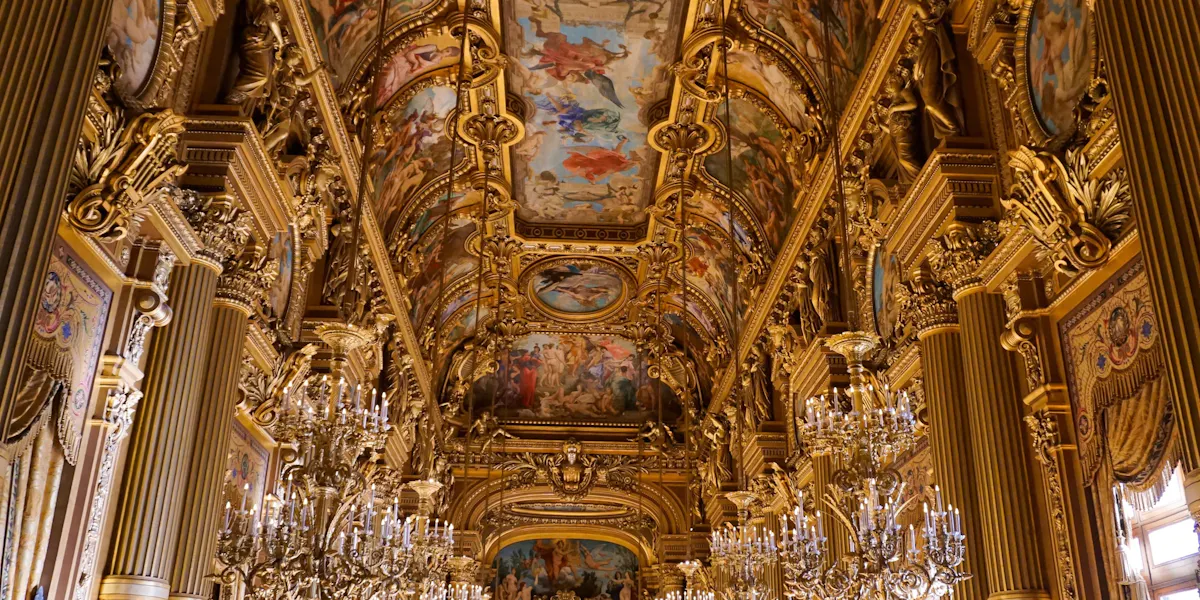
The Grand Foyer boasts of an 18 meters high, 154 meters long and 13 meters wide hall, covered in gold and gold paint. A space intended to take stroll, take a break and mingle, the foyer is strategically located right outside the highest paying boxes. Amidst the gold and glitter, is an impressive ceiling fresco painted by Paul Baudry. Each of these frescos have some connection to art and music. The central painting is an allegory of Music flanked by smaller paintings in oval frames on either sides, one representing Comedy, the other Tragedy.
Those of you who have been to the Hall of Mirrors at the Palace of Versailles , may see a resemblance. However, the Grand Foyer is definitely more visually appealing and far less crowded than the Palace of Versailles.
Opera Library-Museum
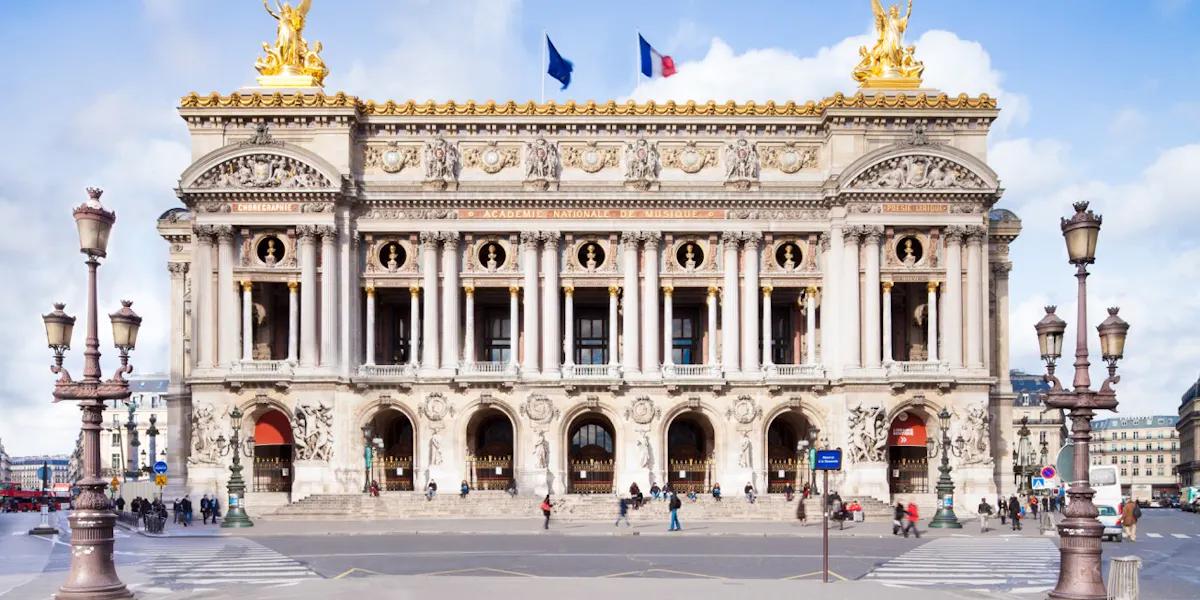
This well stocked library holds a vast collection of items stockpiled from years even before the Palais Garnier was fully constructed. Artefacts mainly pertain to opera and dance, but you will find a fine collection of , paintings, drawings, sketches, costumes, props and 3D models of stage sets. If you’re interested in knowing about the early years of Opera in Paris, a visit to this Library Museum will take you down the history lane.

If you choose to independently tour the Palais Garnier, we’d suggest going for an audio guided tour. The audio guide will help you learn in depth about the building, with anecdotes, documents and lesser known secrets, enriching your experience better. The audio guide points out features that you may have overlooked if you were to be walking without a guide or the audio device, hence ensuring that you get the best out of the Palais Garnier tour. A few things you should know before going for the Self Guided Audio Tour.
- The audio guide device costs an extra 5 Euros ( over and above the entry fee) but is completely worth the money ( and way cheaper than the guided tour).
- The audio guided tour lasts for 1 hour
- Be sure to have 5-7 Euros in cash for the audio guide as the counter accepts only cash. You are also required to leave an official photo id as a deposit while you buy the headset.
- Note, the basic self guided tour does not give you access to the auditorium.
- The Audio Guide is multilingual and available in French, English, Spanish, German, Italian, Portuguese, Russian, Chinese, Japanese and Korean.
Self Guided VIP Palais Garnier Tour
This “Behind the curtain” informative tour takes you through areas usually prohibited to the public. One can walk through the Foyer de la Danse, explore the auditorium, inspect Marc Chagall’s ceiling, the paintings in the Grand Foyer, the façade of the Palais Garnier and chart Palais Garnier’s history through the interactive timeline, all at your own pace.
- The VIP audio tour is offered on an iPad mini.
- The costs are higher than the basic tour. 7 Euros for a single person and 12 Euros if two tickets are bought together. This cost is over and above the entrance fee.
- This tour lasts for 1 hour 30 minutes and is available in French, English and Spanish only.
Buy Palais Garnier Self Guided Tour Tickets and save €5 on your first booking with Headout when you use promo code GOPARIS
These expert guides on guided tours unveil mysteries and give keen insights into the culture and history that led to the construction of the Opera Garnier Paris and are always more than happy to answer your doubts and queries. The guided tour even involves a 20 minute session in the auditorium where you will be seated while listening to stories about the ballet artists, elaborate decorations, French society elites who used to attend the Opera, design of the auditorium etc. Listen out for tales of Phantom of Opera in particular on the guided tour. Peering into his opera box is an all time highlight of the guided tour!.
- There are daily expert English guided Palais Garnier Tours which departs at 11:00 AM and 2:30 PM.
- The guided tour takes about 90 minutes and gives you access to all parts of Opera Garnier - the auditorium, gilded balconies, even up close the stage ( the self audio guided tour lacks access to the auditorium ).
- If the tour group size is big, you will be given headsets in order to listen to the guide clearly.
- Palais Garnier Guided tours in other foreign languages are available and details for its timings and departure can be checked on the official website.
Buy Palais Garnier Expert Guided Tour Tickets and save €5 on your first booking with Headout when you use promo code GOPARIS
All You Need To Know About Visiting Palais Garnier
Palais garnier hours.
• The Palais Garnier is open all days of the week - From September 10th to July 15th - 10:00 AM to 4:30 PM - From July 15th to September 10th - 10:00 AM to 5.30 PM • The Palais Garnier remains closed on January 1st and May 1st • The ticket office closes 30 minutes before the said day's closing time
Getting to Palais Garnier
Palais Garnier is on the corner of Rue Scribe & Rue Auber.
- By Metro - The closest Métro station is Opéra, which you can reach via Lines 3 (pea-green on the official RATP Métro map), 7 (pink), and 8 (lavender).
- By RER - If you're traveling by RER, the nearest RER stop is Auber on Line A.
- By Bus - Routes 20, 21, 22, 27, 29, 42, 52, 53, 66, 68, 81 and 95 stop a short walk away from the Paris Opera.
- You can take a Palais Garnier Tour for free on the 1st Sunday of each month. Note, this also happens to be the most crowded day of the month!
- English tours are on Wednesdays, Saturdays and Sundays at 11:30 AM and 2:30 PM. In July and August, English tours run every day at 11:30 AM and 2:30 PM.
- If you have the Paris Pass, you can take a free English speaking tour on a first-come-first serve either at 11:00 AM or 2:30 PM.
- Since the ticket counter selling tickets for tours and theatre is combined, the lines can be slow moving. For quick entry, we’d suggest purchasing tickets for both tours and theatre online in advance. If this is a last minute plan and you are unable to buy tickets online, there is an automated ticket machines which can help you gain entry quicker.
- Admission to the auditorium may be restricted or forbidden at times for technical or artistic reasons. If you want guaranteed access to the auditorium, opting for the first tour in the morning is suggested. That way, you can avoid any potential rehearsal conflicts.
- For a sedate independent tour of the Palais Garnier, keep aside 2 hours of your day. This is including the stringent security check which will take about 30 minutes on a crowded day.
- If you're interested in seeing an Opera show, you can pre-book your tickets here . Try timing your visit such that you can squeeze in a tour and an opera show.
- The Palais Garnier roof has a honey bee hive and over 300 kgs of honey is harvested every year. You can pick up a tiny bottle from the gift shop as you exit. No better souvenir, we say!
More Paris Guides
Explore more of Paris with our detailed Paris attraction guides.

See more Paris. Save more money.
Save €5 on your first booking with Headout when you use promo code GOPARIS
EXPLORE NOW
Lakshmi Menon
Born to parents bit by the wander bug, Lakshmi calls her love for travel "hereditary and habitual". Perpetually ensconced with a book in her hand and a mug of coffee in the other, she has been to over 15 countries in her 23 years of existence and is currently saving miles and money for her solo trip to Iceland. Always hustling towards the least trodden path, she has encountered some wonderful people during her escapades and if you ever meet her, she won't stop gushing about them.
Be a smart traveler
The first to know about trending destinations, travel deals, tips and all things travel.

Guide to Paris’ Opera Garnier: Inside the Phantom’s Lair
Here’s my guide to visiting the glamorous Opera Garnier in Paris. The opera house is a must visit attraction in the 9th arrondissement.
A creation of Charles Garnier, it was part of Napoleon’s great makeover of Paris. It’s highly decorative, a mix of Beaux-Arts symmetry and Baroque and Renaissance elements.
Visiting Paris’ Opera Garnier is a dual-purpose immersive experience.
You can experience the incredibly opulent palace space, designed by Charles Garnier. And you can re-live the Gothic potboiler, The Phantom of the Opera , from Gaston Leroux and Andrew Lloyd Webber fame.
What could be better? An over the top Paris opera house for an over the top murder-y opera villain.
Until recently, I hadn’t been inside for a long time. I saw the famous Chagall ceiling when I was young.
Thereafter, I satisfied myself with admiring the impressive facade of what may be the world’s most famous opera house, as I strolled past it in the 9th arrondissement .
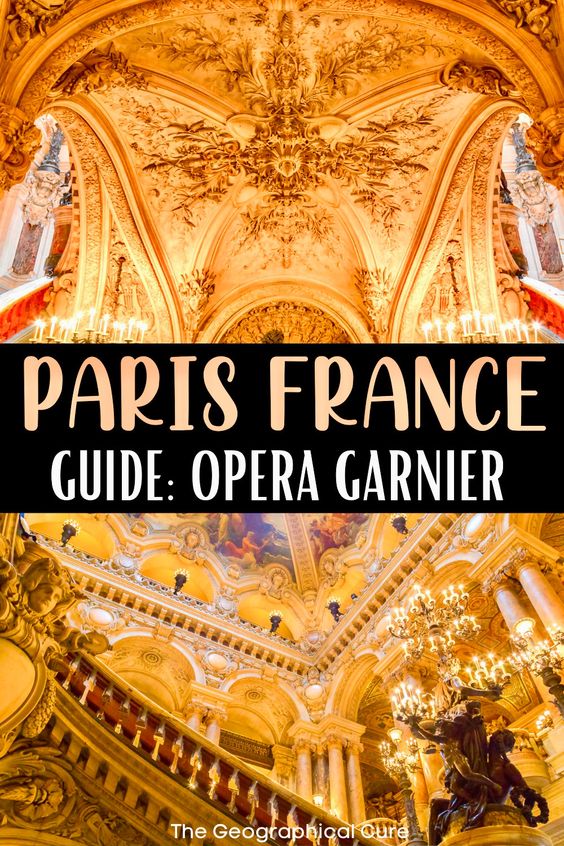
But the last time I was in Paris , I was assailed by murky recollections. And by the Phantom’s plaintive theme song playing “there inside my mind.”
I hadn’t planned on going in. But I did. It’s almost as if I was involuntarily ventriloquized by Andrew Lloyd Weber.
If you don’t want to head to Versailles and suffer through the awful lines, come here instead.
The Opera Garnier’s just as sumptuous, maybe more so, than Versailles and hence a great alternative. Truly, the opera is one of Paris’ most unsung hidden gems , a gaudy jewel box treasure.
Open the jewel box and look in, don’t just stroll by.
History of the Opera Garnier
The Opera Garnier, also known as the Palais Garnier, first sprang from the brain of Napoleon III.
It wasn’t a calculated choice. While attending the Opera of Rue Le Peletier, Napoleon barely escaped a bomb in an assassination attempt.
Right then and there, Napoleon resolved to build a new opera house that he could safely attend. One that had a private entrance just for him. Besides, Paris needed a glamorous new theater.
In 1860, Napoleon held an international competition for the design of the new Paris Opera. 171 proposals were submitted anonymously.
An unknown architect won, the 34 year old Charles Garnier , putting the seasoned Parisian architects to shame. His project was number #38, named “I aspire to much, I expect little.”
Garnier was so inexperienced that he didn’t even have his own office. He had to build one on the opera site. And he didn’t like the site overly much. It was smushed together and enclosed between four roads in the shape of a diamond.
Garnier repeatedly asked for a different venue. But the answer was always no. Haussman’s grand boulevards and Paris’ urban renewal were the first priority. Roads were more important than opera.
In 1861, Garnier began construction. His masterpiece took 15 years to finish. The opera is wholly Garnier’s creation, from start to finish. He designed everything.
Garnier also selected and guided the work of collaborating artists, many of whom were prestigious grand prize winners. In total, there were 15 principal artists, 75 sculptors, and myriad artisans who slaved away on the Opera Garnier.
It didn’t all go smoothly. In 1962, the builders discovered a lake underneath the site.
They created a stone cistern — an artificial lake — for the water and underground tunnels, as a work around. Even today, the cistern halts the rising water, though water still needs to be pumped out. The tank’s also used for Paris firefighters to practice nighttime swimming.
Construction of the Paris Opera was also controversial. Almost operatic, if you will. Everyone felt entitled to weigh in on the splashy new place.
Garnier’s plan was mocked as a labyrinth, a turkish bath, and wedding cake. Even Empress Eugenie asked Garnier what style he was aiming for. His terse response was that it was “in the Napoleon style, Madame.” Louis XIV style was passé.
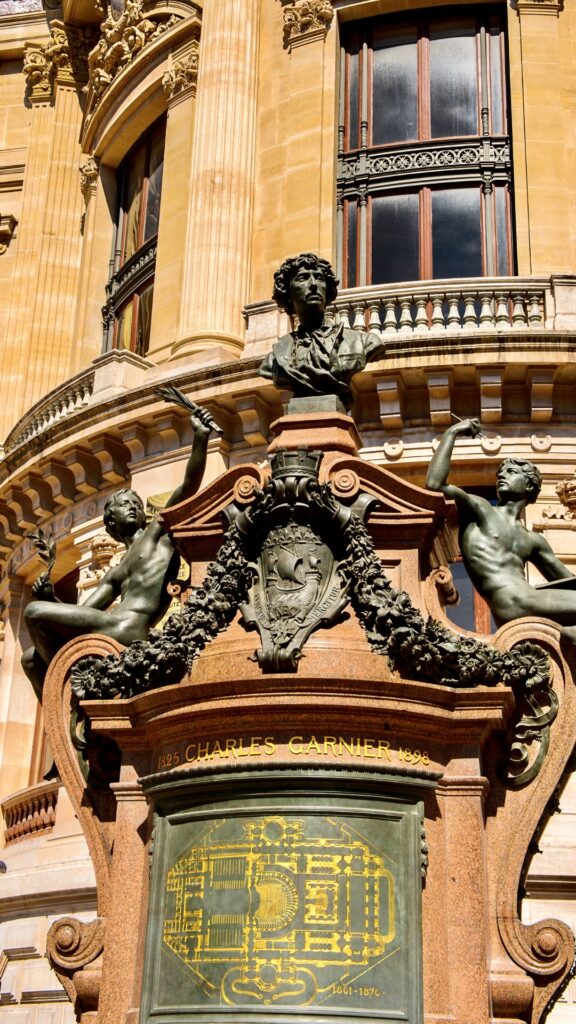
During construction, the opera facade was kept under wraps, to build tension. When the opera was finally inaugurated in 1875, the public saw the showy facade for the first time.
And they were stunned.
Tickets & Tours
The Opera Garnier is a popular attraction that you should book ahead. Click here to book a skip the line ticket. Click here to book a 2 hour guided tour.
Guide To The Opera Garnier: What To See
Here’s what you’ll see on a visit to the Opera Garnier.
Exterior Facade
The exterior is sometimes compared to a wedding cake. You can sort of see why.
It’s built in a rather bombastic Beaux-Artes style with eclectic Neo-Baroque elements. Between the grand columns are bronze busts of great composers. The two gilded figures crowning the facade on the left and right are Harmony and Poetry.
At the very top, there’s a statue of a shining Apollo holding up a lyre. He seems intent on proclaiming that the opera house is THE place for arts.
One the eastern side is the Emperor’s Pavilion, the only non-symmetrical part of the building. This was the entrance for Napoleon and wealthy season ticket holders. It’s now closed.
The most famous sculptural group on the facade is The Dance by Jean-Baptiste Carpeaux.
When it was unveiled in 1869, it caused an immediate furor because of its “obscene” nude figures. An anonymous vandal even threw black ink on the sculpture.
Carpeaux steadfastly refused to sculpt a substitute. But during the fall of the Second Empire, critics were distracted.
The sculpture was forgotten and never replaced. Now, there’s a replica on the opera facade and the original is in the Musée d’Orsay.
READ : Guide To the Masterpieces of the Musee d’Orsay
Paris Opera Interior
You enter on the left side and are greeted by a bust of Garnier.
The interior was designed in four segments: the entrance, the auditorium, the stage, and the administrative offices. As you proceed through, it’s almost a crescendo, with each room more magnificent than the next.
The acoustics were outstanding, and the stage one of Europe’s largest.
The highlights are the Grand Staircase, the Grand Foyer, and the Chagall Ceiling. You begin on the ground level and are greeted by costumes. The Opera Garnier makes all their own costumes, an impressive feat itself.
1. Grand Staircase, aka the Catwalk
Then you walk up the jaw dropping Grand Staircase. It’s made entirely of marble, and surrounded with arches, hidden nooks, statues, and gold — gold everywhere.
In the 19th century, the haughty Grand Staircase was a gossipy soap opera, the place to see and be seen.
Garnier aptly said that “The opera is the staircase.” The scandalous stairway revealed all — who was together, who was having affairs, who was favored, who was scorned.
The staircase is made of white marble from Italy, with balusters of antique red and green marble. The staircase is flanked by 36 large columns, and divides into two staircases that direct opera goers to their respective seats.
The ceiling has fresco by Isidore Pils, painted in 1869-74, that depicts the Triumph of Apollo. At the top of the staircases are large torchieres.
2. The Grand Foyer, a Mini Versailles Hall of Mirrors
The 18 foot high Grand Foyer is astonishing. It’s decidedly reminiscent of the Hall of Mirrors at Versailles.
This was the place where aristocrats strolled after they were done “acting” on the Grand Staircase or during intermission.
The room is all gold and glitter. At the top, is another impressive ceiling fresco, this one by Paul Baudry, which shows the history of music.
The foyer’s key decorative motif is the lyre. The Grand Foyer was renovated to perfection in 2004.
At each end of the grand foyer lie two salons. The Salon du Soleil (Sun Salon) has a golden sun burst and mirrored walls. The Salon de la Lune (Moon Salon) boasts a night sky adorned with silver moon rays and stars.
The sun room was supposed to represent fire and be the smoking room. The moon room was supposed to represent ice, for a cool sorbet.
But the decorator reversed the schemes to Garnier’s dismay. Opera goers were forced to traipse through the “ice room” to smoke a cigar and the “sun room” to nibble a sorbet.
3. Chagall Ceiling: A Surrealistic Gift to Paris
The Marc Chagall ceiling isn’t original. It was commissioned in 1964 and placed over the existing academic painting by Jules-Eugene Lenepveu, The Muses and the Hours of the Day and Night .
But it’s so much better. It’s the perfect backdrop for the Garnier-designed 7 ton bronze and crystal chandelier.
Legend holds that General de Gaulle and Andre Malraux, minister of culture, were attending an opera with a set and costumes designed by Chagall. The minister glanced at the ceiling and frowned in tedium. On the spot, he asked Chagall to design a new ceiling.
Chagall was a “modern” artist back then. His supernatural style work drew from the artistic movements of Surrealism, Fauvism, and Cubism.
The proposed ceiling was controversial. Some people don’t like anything new. Some thought it was garish and would clash with the opera’s Second Empire decor.
To keep the peace and as a concession to critics, Chagall proposed that Lenepveu’s work be preserved and Chagall’s be placed on a removable canvas stretched over it.
The mural took Chagall a year to complete. It consists of 12 canvas panels and a round central panel covering 240 square meters.
Chagall was 77 at the time and it was an act of love. He donated it to the opera house gratis. The mural has his trademark features — luminous prismatic colors, dreamy details, and poetic lyricism.
If you look closely, you’ll see that the ceiling is an homage to music. It features 14 composers from different musical periods, musical instruments, and Paris’ signature buildings.
Malraux is even hidden behind a window. Chagall’s ceiling helped make the opera more fashionable again.
4. Auditorium and Stage
Red is the color of glamor. And that’s what you’ll find in the opera auditorium.
If you want to actually visit the auditorium, you have to go on a guided tour. On the self-guided audio tour, you can only peek through a window and can’t properly see the Chagall ceiling.
The auditorium is very ornate, decorated in red velvet, marble, and gold leaf. Because you can never have enough gold leaf in an opera house. If you’re thinking that it’s just all too much, remember that opera itself a florid overwrought affair.
The stage is a classic horseshoe shape. The curtain is actually made of canvas, but contrived to appear like draping velvet. The stage featured many luminaries, including opera star Maris Callas and dancer Rudolf Nureyev.
The auditorium seats almost 2,000. While gorgeous, the seats don’t look terribly comfy. They were made in another era, where comfort didn’t dictate nearly everything.
The most expensive seats are the boudoir-like boxes, though they have a slightly obstructed view of the stage.
The point, of course, was to be seen by others, not to have the most ideal view of the performance. Or, to draw the velvet curtains for a tryst. The opera’s a romantic place, after all.
Phantom of the Opera: Inspired by the Opera Garnier
By today’s politically correct standards, with its clunky plot, Phantom of the Opera may seem a bit dated or patriarchal. But I can’t resist a lush high Gothic romance, even if the titular hero is a bit murdery. It’s escapism, as its author Gaston Leroux, a true crime writer and opera critic, no doubt intended.
Yet, the practical side of me always wonders where the Phantom got a horse and does he have a humidifier.
In any event, for purposes of this article, I want to explain how historical events at the Opera Garnier inspired Leroux’s 1910 potboiler. His fantasy novel is an ingenious blending of fact and fiction, with the Paris Opera as a star character.
The novel stars Erik as the phantom, a disfigured composer who wears a mask to cover his face. He takes up residence in the underground lake beneath the theater.
Erik becomes obsessed with a young soprano, Christine Daaé. He becomes her “angel of music,” giving her complimentary singing lessons.
The phantom rigs a chandelier to fall on the audience as a distraction, killing people. He then kidnaps Christine, taking her by gondola to his watery underground lair full of secret tunnels. He regales her with the title song Phantom of the Opera and Music of the Night.
Christine’s star rises, and a handsome suitor enters the picture. A jealous Phantom is furious and begins terrorizing the opera house. I won’t spoil the ending if you haven’t read the novel or seen the musical.
But many elements of Leroux’s novel, which is set in an opera house, come directly from the Paris Opera. The Phantom’s underground lake-lair is real, as I mentioned above. Though today it’s brightly lit, so not as eerily gloomy. And there are actually tunnels, just as Leroux wrote.
The Paris Opera chandelier is also featured in Leroux’s novel. In 1896, a counterweight fell from the real chandelier, killing a woman in the audience. In Phantom, Leroux also uses a falling chandelier as a major plot point, a dramatic scene (described above) of kidnapping and senseless murder.
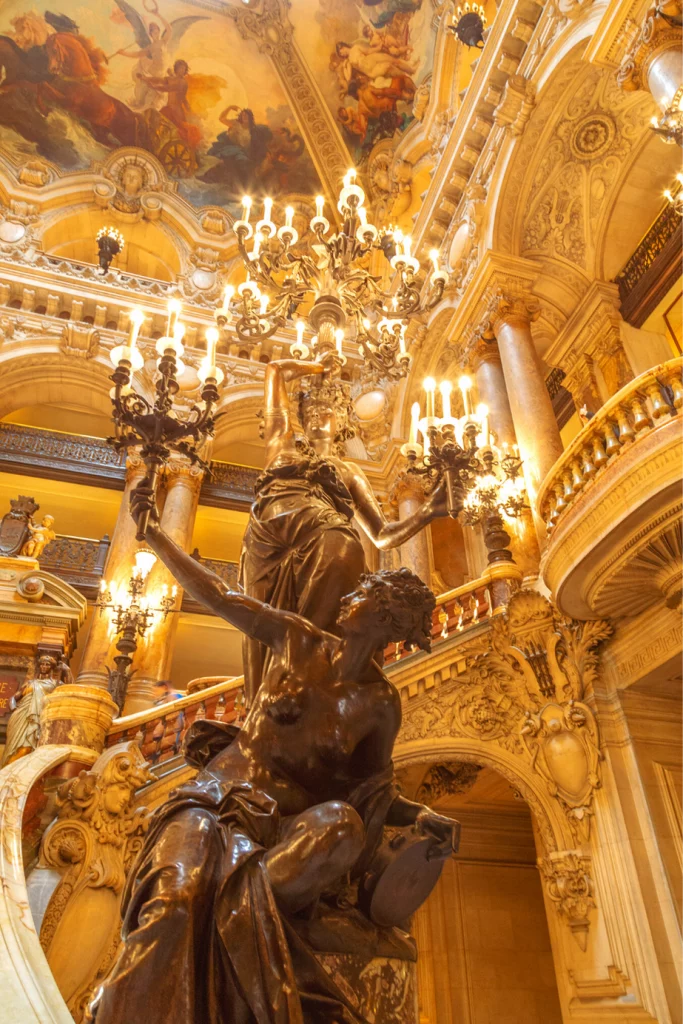
When Leroux wrote his novel, people also really thought that a pesky ghost was haunting the Paris Opera, just like the phantom haunts the opera in the novel and musical.
Paris Opera performers hung a lucky horseshoe by the stage to ward off evil spirits. Some claimed to hear ghostly whispers from Box #5, even when it was vacant.
Although the Christine-Phantom romance is fantasy, the characters of Erik and Christine may be based on actual people.
The grand masked ball they attend was set on the Paris Opera’s Grand Staircase. The Phantom appears on the staircase dressed as Red Death, carrying a copy of his new opera. His opera is then performed on a stage much like the Paris Opera stage.
Tips For Attending a Performance at the Opera Garnier
The Opera Garnier still functions as a world class performance venue. It’s the home of the Paris Ballet. So usually ballet is on the menu, but there are also concerts and operas.
You can check the schedule of performances here .
Just click on the calendar to see what’s playing that month. Click on Garnier, not Bastille. The new Opera Bastille utterly lacks the Garnier’s old world ambiance anyway.
It’s easiest to reserve online. You need to register on the website to book a ticket. Choose your seats. And voila!
Attire is mostly business-y or business casual, which makes sense because people are going to the opera house after work. You won’t need a fancy ballgown, unless you’re going to a special evening gala.
Like most US theaters, there’s a bar inside that sells champagne and snacks before the show and during intermission.
Arrive early to admire the gorgeous building and take photos on the iconic marble stairway. If the performance isn’t in English, there will be subtitles.
But don’t let the subtitles distract you from gazing, in adoration, at the sublime Chagall ceiling. If you’re not close enough, head to the orchestra section during intermission to take in the colorful centerpiece.
Don’t miss the glorious Opera Garnier. It’s an unmissable Paris site and one of the best things to do in the 9th arrondissement.
Swathed in gold, you can strain your ears to hear echos of the Phantom of the Opera. You won’t be kidnapped or killed. But you can visit the haunts that inspired the novel and bask in Garnier’s grandiose creation.
Practical Guide & Tips for Visiting the Opera Garnier:
Address: 8 Rue de Scribe, Place de l’Opera 75009 Paris
Hours: 10:00 am to 4:30 pm, Guide tours in English are at 11:00 am and 2:30 pm
Entry fee: 14 euros for a self guided tour. Not included in Paris Museum Pass.
Metro : Line 3, 7, or 8 to Opera
Pro tips: The nearest car park is Place Vendome. Access to the auditorium may be closed for technical reasons or performance rehearsals.
Virtual Tour : If you can’t get to Paris, you can explore the Opera Garnier virtually on Google Arts & Culture .
I hope you’ve enjoyed my guide to the Opera Garnier. You may enjoy these other travel guides and resources for Paris:
- 5 Day Itinerary for Paris
- 3 Day Itinerary for Paris
- 2 Day Itinerary for Paris
- One Day In Paris Itineraries
- Tips for Planning a Trip to Paris
- Tourist Traps To Avoid In Paris
- Top Attractions in Montmartre
- Top Attractions in the Latin Quarter
- Top Attractions in the Marais
- Best Museums In Paris
- Hidden Gems in Paris
- Secret day trips from Paris
If you like to visit the Opera Garnier in Paris, pin it for later.
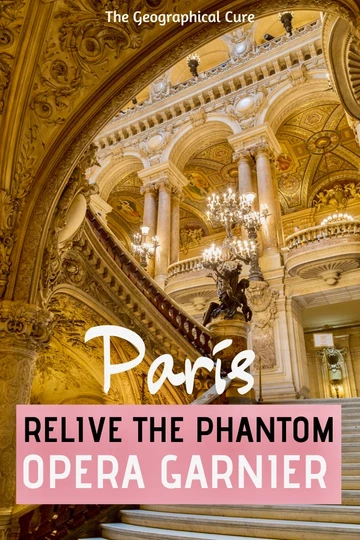
1 thought on “Guide to Paris’ Opera Garnier: Inside the Phantom’s Lair”
Very interesting many thanks for this, I would love to visit
Leave a Comment Cancel reply
Save my name, email, and website in this browser for the next time I comment.
Last Updated on January 29, 2023 by Leslie Livingston

My Life in Paris and Travels Around France
A Walk Through Palais Garnier

If I could take a walk through Palais Garnier every day I think I would be the happiest person in the world. I get chills every time I’m in the building – it’s that beautiful. On Friday I visited again and must say, without a lot of other visitors it was simply stunning. I hope the photos will make you feel like you’re taking a virtual tour of Palais Garnier. I’m especially excited to share few special behind the scenes moments like the Palais Garnier water reservoir and fish as well as the rarely seen Foyer de la Danse .
One of the biggest silver linings of this strange time has been being able to take advantage of a relatively empty Paris. I’ve revisited a lot of my favorite spots from the Musée du Louvre (post coming soon) to Musée de l’Orangerie and Musée d’Orsay .

Palais Garnier is at the very top of my list of places that I think everyone who comes to Paris should see. It oozes Parisian opulence. There’s so much to see from the Chagall ceiling and the Grand Foyer to the staircase and all of the decorative details in-between. And all of those things go to the next level with a behind the scenes tour.
Palais Garnier Behind the Scenes Tour
Last December Romain surprised me with a behind the scenes tour of Palais Garnier . We went literally everywhere top to bottom in the building. It was an incredible experience and something I’ll never forget. The only *tiny* bummer was access to the auditorium was limited because it was a rehearsal day. Luckily I’ve seen the room and Chagall ceiling many times before, but when booking a visit it’s something to keep in mind.
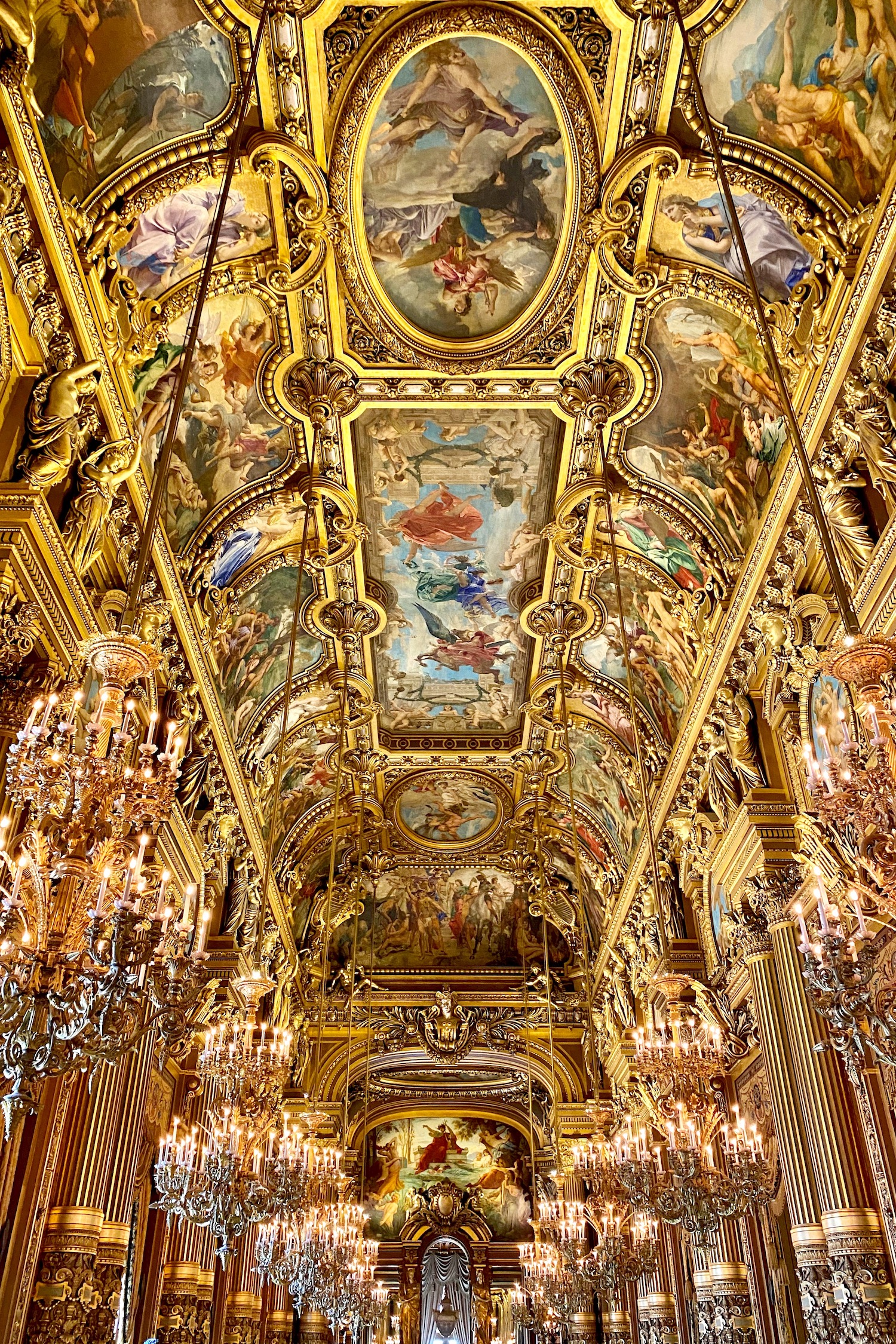
On Friday, we had full access to the auditorium. Without a lot of visitors we could stop and enjoy the space for as long as we wanted. Pictures don’t do it justice.

We were also lucky to have a modified version of the behind the scenes tour again. They cancelled the 2020 season so we couldn’t go upstairs to see the dance studios. I have plenty of photos from December here .
Palais Garnier Water Reservoir and Fish
We still got to see the Palais Garnier fish that live in the “lake” below the stage – it really does exist! Architect Charles Garnier incorporated the water reservoir in his original plans.

Palais Garnier sits on marshy land, so there was a problem with controlling the high groundwater. Garnier came up with the water reservoir as a solution to control the groundwater and redistribute the pressure on the basement walls. It also provides a reserve of water in case of a fire and firefighters use it as a place to practice swimming in the dark.

The firefighters also take care of the Palais Garnier fish (and one eel), located in a separate smaller water tank in the basement. They feed the fish daily and rumor has it that they add a fish to the group when one of their own is lost in the line of duty. I think it’s such a sweet tribute.
Palais Garnier Foyer de la Danse
The stage is currently closed off, but we did get to go behind the stage to the rarely seen Foyer de la Danse . Even though it was dark when we visited, this dance warmup room looks like a smaller version of the Grand Foyer. In the 19 th century, it was a space where only a few select financial subscribers of the Opera would meet with dancers. Couches line the room – I’ll let you use your imagination there. It also inspired impressionist painter Edgar Degas .

I can’t wait to hopefully visit again and see the space fully lit up.
I’ll take any opportunity I get to visit and walk through Palais Garnier, even if it’s only for a few minutes. I hope you enjoyed our modified virtual tour of Palais Garnier. If you’re interested in taking a tour on a future Paris trip, don’t hesitate to contact me here !
Share this:
- Click to email a link to a friend (Opens in new window)
- Click to share on Pinterest (Opens in new window)
- Click to share on Facebook (Opens in new window)
- Click to share on Twitter (Opens in new window)
- Click to share on Tumblr (Opens in new window)
You May Also Like:
Leave a reply cancel reply, privacy overview, discover more from landen kerr.
Subscribe now to keep reading and get access to the full archive.
Type your email…
Continue reading
- #Luxury travel
- #Unusual Moscow
- #Jewish Heritage
- #Russian traditions
- #Petrozavodsk
- #Interesting places
Petrozavodsk
Karelia is famous for its virgin nature and breath-taking landscapes; many Saint Petersburg citizens strive to visit Karelia during their vacation or weekend to have a break away from the big city. Petrozavodsk is the main city of Karelia, and while many people arrive there to start their further journey around the region, it is worth seeing and walking around. During the city tour, you will see the most beautiful sites of Petrozavodsk and get acquainted with the town's history.
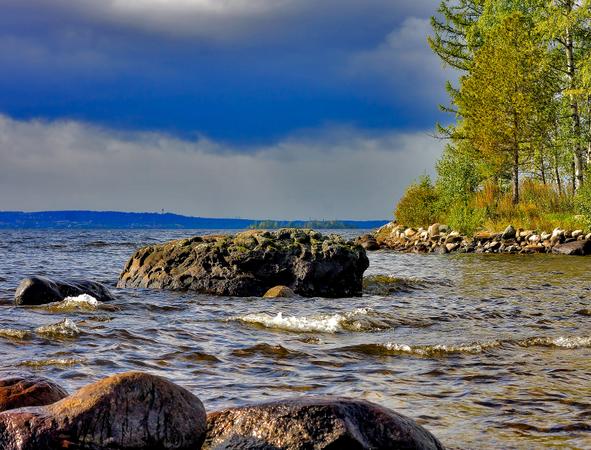
10:00 AM Panoramic city tour

Your guide will meet you at the railway station or at your hotel. You will see two central squares, the cultural center of the city, with two museums and two theatres; you can visit them for an additional fee.
The landmark of Petrozavodsk is Onega Quay, the favorite place of the locals.
- 10:00 Panoramic city tour

We use cookies to improve your experience on our Website, tailor content, and measure advertising. By continuing to use our Website, you accept our Privacy Policy .
Your request has been sent successfully! Our travel expert will contact you shortly.
This site is protected by reCAPTCHA and the Google Privacy Policy and Terms of Service apply.

hep-i-book'a
A lazy perfectionist in the kitchen and on the road, petroskoi or petrozavodsk, capital of karelian republic.

My second trip to Petrozavodsk , the capital of Karelian Republic in the North of Russia, has proved once again my first impression of a very provincial and yet welcoming city. In fact this visit has been one of the most rewarding as far as my job goes. But of course there was a travel part to this journey which was almost completely left out during my first time in Petrozavodsk 2 years ago .

Petrozavodsk is of exactly the same age as St Petersburg and was founded by the same super-active person, tsar and then emperor Peter the Great. Actually, Petrozavodsk is a shortened version of Petrovsky Zavod , the Factory of Peter, as there was this factory founded to make metal things for the Russian fleet.

People had populated the area long before the new settlement appeared on the shores of the Onega lake, well, in fact, thousands of years earlier, so the region has enough to show and tell about its indigenous people and their culture, the Karelians. The language is very close to the Finnish language and – if not widely spoken – it is still preserved in the region. Petrozavodsk is Petroskoi in Karelian and that’s what you read written on top of the Stalinist railway station building when you arrive from St Petersburg.

Karelia for me is all about forests and stones. It’s a pity in this time of the year you don’t see much when travelling with an overnight train. When we arrived in Petrozavodsk it was so early in the morning we had to wait at the station (which had free wifi and actually there’s wifi all over the city for free!) till it got less dark and we could go have breakfast on the 4th floor of an ex- mica factory (dating back to 1930 but now shut down) with a view over the old roofs of the city. We were the first customers but I must say that Na Kryshe (On the Roof) cafe proved to be ready with tasty buttermilk oladyi (pancakes) served with oblepikhovoye varenye ( sea buckthorn jam) and a pot of milk Oolong tea. And that was a very economical breakfast!

Out of all the cities I visited so far this autumn I think I liked the haunted Kaliningrad with its ever present past the most. Whereas Chelyabinsk left very negative feeling and it was not for nothing that I kept coughing each time I went outside there, Petrozavodsk left a rather positive impression on me. It’s a small very low rising (unless you visit one of the suburbs) provincial town with some preserved old houses and an embankment where you can catch a hydrofoil to get you to the famous Kizhi island which has become an open-air museum for wooden structures. We arrived too late in the year to get there but I hope I will see Kizhi soon. At least I don’t mind seeing Petrozavodsk in a better weather!

Petrozavodsk itself is an open-air museum for old houses, be it wooden barracks or Stalinist imposing buildings along the main arteries of the city. It used to be a very St Pete-like city, I mean the houses were really old, both built in stone and those in wood. Like this hospital building which can be seen from the Onega Lake embankment:

Well, the war swept away most of the old city and there came the 1950s when the new rationalizing plans which brought new buildings for the better future of the Soviet Petrozavodsk. And oh boy what houses!

This is the house where the central office of Post of Russia is (no postcards!). Actually sometimes the buildings housing Post of Russia are one of the best in the cities I’ve visited (like in Vologda). But then it rarely affect the quality and the swiftness of the service…

Another grand Stalinist house forming the ensemble of the central square:

With these Stalinist buildings you just have to remember to look up from time to time – to discover all those details and (decaying) balconies which I actually try to avoid these days 🙂

And then – in stark contrast – there is this type of houses – we saw several of them:

or these barracks – people still live there, mind you…

the same house from the other side – and with the wood for the long winter…

and this is the entrance to one of the wooden houses opposite those barracks

and how about this one?

the wall is just oh so decadent!

However the city has a number of 19th and early 20th century wooden houses all gathered together near Onega embankment that form a separate district of historical and architectural value. Take a walk along the Onega Lake embankment starting from the square in front of the Theatre and then turning left. But do not walk fast however windy the day might be!

The embankment is yet another open-air museum (and how does one fit in all this in such a small town?!) – this time of various successful and not that very successful sculptures and statues. The one from the beginning of the post called the Statue of Fishermen (a gift from Minnesota) looks really nice against the colourful sunset sky and the lake while the tall figure of Peter the Great (19th century) has actually been removed from its original place twice throughout the Soviet period. And guess who stands in Peter’s place now in the middle of the central square? You’ll find it out later in the post.

And with this small stone house begins the district full of old wooden houses, in one of which we entered to warm ourselves up a bit and from which we went out with some embroidered souvenirs. They also have some natural products like shampoo and soap, made without any preservatives and all that stuff.

This is the hospital church:

And this is one of the most expensive hotels in the city spoiling the view on the old town. ‘Spoiling’ because as I said the city has very small amount of high-rises in its historical center, so this weird construction can be seen from far away.

On the last day of our stay we left our hotel and went for a walk in the sun, heading towards the local history museum where we wanted to spend some quality time. It was sunny but rather frosty and we had quite a lot of time before the train back to St Pete – that was not an overnight but a rather fast Siemens train with comfortable seats which takes 5 hours.

When we came to the end of this wall we realized that was the Industrial Museum (which we skipped) occupying the old factory buildings. We thoroughly enjoyed this urban art on the walls!

So in the end we spent an unusual for an average visitor lot of time at the local history museum . Recommended by the way! There’s even a chance to listen to some Karelian folk songs and incantations or get a copy of Karelian recipes (will try some of them for sure!). Karelian cuisine is based on what the wild nature gives you and so some of the exhibits at the museum were dedicated to it.

And yep, here’s your Lenin right in the middle of Lenin Square (apparently), where Peter the Great used to stand until the 1930s came. And the Square itself has a very curious story to tell – it changed its name so many times I got lost when counting them. Well, they definitely embellished the look of the square whatever name you call it in the recent years. But as soon as you go into the back yard of the museum, you find yourself staring at this wrack of the “state-preserved” building:

The museum will also tell you about the brief period of the Finnish occupation of the city (1941-44) when the same Square which used to be Round Square (:) was renamed into Administrative Square. And oh, remember those Karelian forests that go on and on and on? Well, with the forests you have a strong culture of gathering or foraging and that means you have all the tools for berry picking or hunting for mushrooms 🙂 Here’s what you can see at display at the museum:

This thingy with spikes is to pick berries in a fast and efficient way. Everything made from wood and bark of the trees… Perfect! Just as this proto-rucksack for carrying all the treasure the forests can give:

After that we just could not have missed the local food! So we headed to the same restaurant opposite one of the best known symbols of Petrozavodsk (hotel Severnaya where I stayed last time – definitely NOT recommended, if only to see the inside of that super-red Stalinist buildings with white columns) where I ate 2 years ago . The restaurant is called Karelskaya Gornitsa and is although quite pricey and tourist-oriented is a nice place to imagine yourself travelling back in time.

But you see, last time we went to the Finnish part of the restaurant and this time we entered the Karelian part, which I found out when we were already leaving the place. All the time we were there I was wondering why I cannot recognize the place at all =) And then they explained to me there are two entrances leading to two parts of the restaurant. So we’ve made a better choice this time entering the Karelian cuisine part!

There I sampled thew most fluffy and almost yogurt-like thing called tolokno (oat flour which contains all the bran usually removed when making the regular flour) mixed with blueberries (hence the colour) and also a rye blin (pancake) filled with millet. This type of rye or barley pancake is called skantsy or sulchiny and is traditionally filled with porridge (they are either baked or fried, sweet or sour) . We drank cowberry mors (juice) which is almost always the best choice when it comes to traditional non-alcoholic drinks in Russia.
For some Karelian recipes , see my post on kalitka , traditional Karelian rye boat-like pie which is also enjoyed in Finland and in the North of Russia.

So, to wrap up Petrozavodsk, here are my checklist points:
- decent postcards – failed
- post office – found
- market – failed
- local history museum – done
- dairy products and baked stuff – sampled
- local specialit é s – as far as the vegetarian stuff is concerned – tasty! And my Mom said that her fried fish and rich mushroom soup were really good!
- old town – seen and admired
Here you can hear the official hymn of the Republic of Karelia (actually a song from 1963). It was played on the train when we were leaving Petrozavodsk without unfortunately seeing all the beauty of the Karelian woods and lakes…
By the way, I am going to the dark-dark Arkhangelsk in two weeks! Hope this time I will get hold of the authentic sochni of Arkhangelsk…
Share this:
- Click to share on Facebook (Opens in new window)
- Click to share on Twitter (Opens in new window)
- Click to share on LinkedIn (Opens in new window)
- Click to print (Opens in new window)
- Click to email a link to a friend (Opens in new window)
- Click to share on Vkontakte (Opens in new window)
- Click to share on Tumblr (Opens in new window)
- Click to share on Reddit (Opens in new window)
- Click to share on Pinterest (Opens in new window)
- Click to share on Bloglovin' (Opens in new window)
- Click to share on Pocket (Opens in new window)
4 thoughts on “ Petroskoi or Petrozavodsk, Capital of Karelian Republic ”
Great atmospheric pics!
I love this kind of posts and pictures. Amazing!
Thank you, Abel! Now I will have to get back to some cooking posts as well 🙂
Say something... Cancel reply

- Already have a WordPress.com account? Log in now.
- Subscribe Subscribed
- Copy shortlink
- Report this content
- View post in Reader
- Manage subscriptions
- Collapse this bar
Season 24/25
Subscribe to the 24/25 season.
- Discounts up to 30%
- Priority booking for all the season’s productions
- Free exchange of your tickets
Show / Event
Concerts and Recitals
Palais Garnier
Opéra Bastille
- Studio / Amphithéâtre
- Extra-mural
- With the family
- New productions
- The great classics
- Contemporary works
- Previews for young adults
- Audio described performances
- Works from the repertoire

Giuseppe Verdi
from 10 to 30 Sep 2024
On sale 28 May 2024 from 12:00 p.m

Dmitri Shostakovich
Philharmonie de Paris
on 13 Sep 2024 at 8 pm
On sale 20 Jun 2024 from 12:00 p.m

Madama Butterfly
Giacomo Puccini
from 14 Sep to 25 Oct 2024
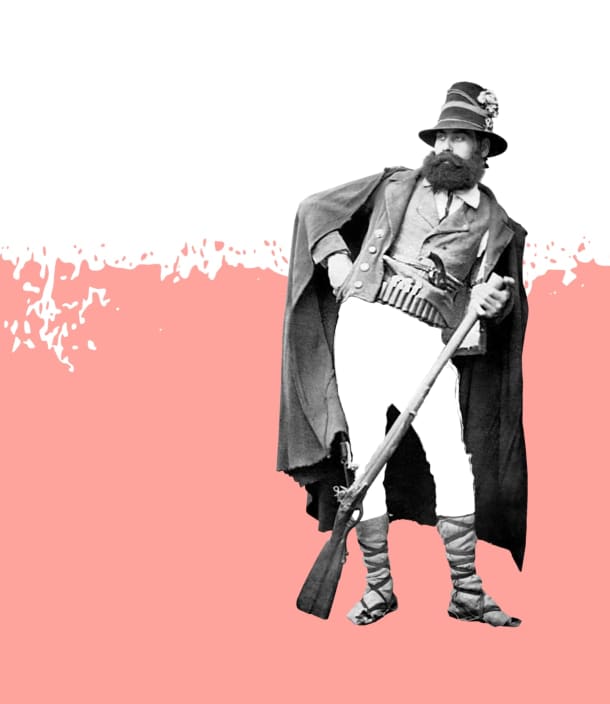
Les Brigands
Jacques Offenbach
from 21 Sep 2024 to 12 Jul 2025

Charles Gounod
from 26 Sep to 18 Oct 2024

William Forsythe / Johan Inger
from 04 Oct to 03 Nov 2024
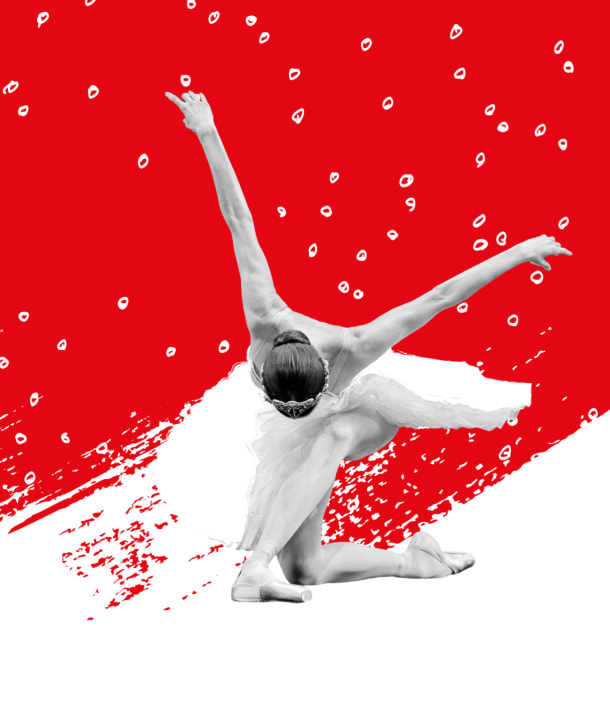
Opening Gala
Opening of the dance season
on 01 Oct 2024 at 7:30 pm

Musical encounter October 3
Studio Bastille
on 03 Oct 2024 at 1 pm
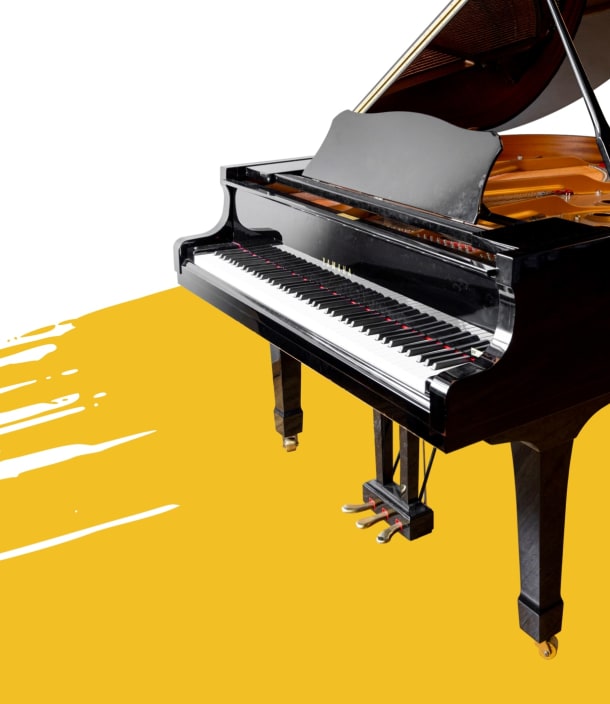
Tribute to Gabriel Fauré
Amphithéâtre Olivier Messiaen
on 04 Oct 2024 at 8 pm
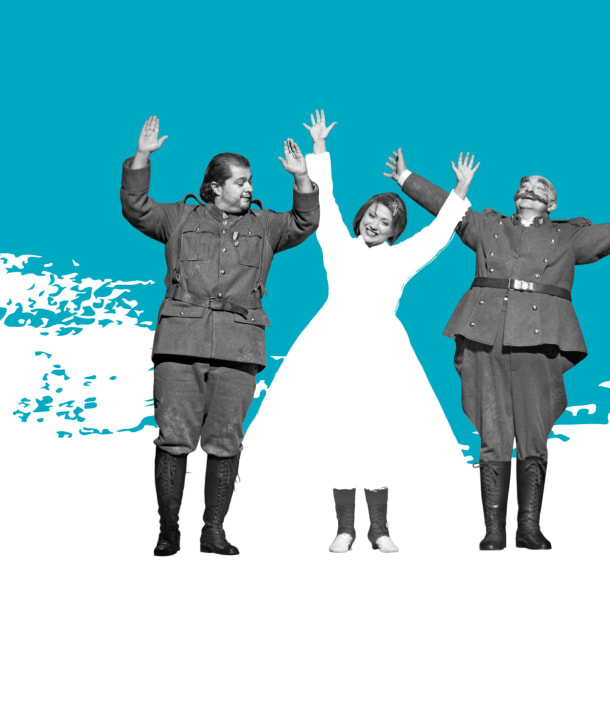
La Fille du régiment
Gaetano Donizetti
from 17 Oct to 20 Nov 2024
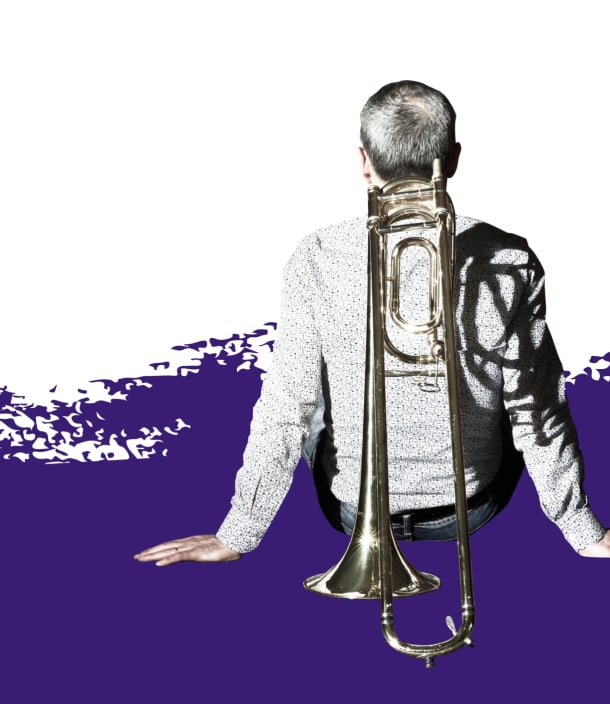
Musical encounter October 17
on 17 Oct 2024 at 1 pm
on 27 Oct 2024 at 12 pm

Kenneth MacMillan
from 29 Oct to 16 Nov 2024
On sale 18 Jun 2024 from 12:00 p.m

The Magic Flute
Wolfgang Amadeus Mozart
from 02 to 23 Nov 2024
Musical encounter November 7
on 07 Nov 2024 at 1 pm

Musical encounter November 21
on 21 Nov 2024 at 1 pm

Benjamin Bernheim
on 24 Nov 2024 at 8 pm
Musical encounter November 28
on 28 Nov 2024 at 1 pm

The Rake's Progress
Igor Stravinsky
from 30 Nov to 23 Dec 2024

from 01 Dec 2024 to 12 Jun 2025
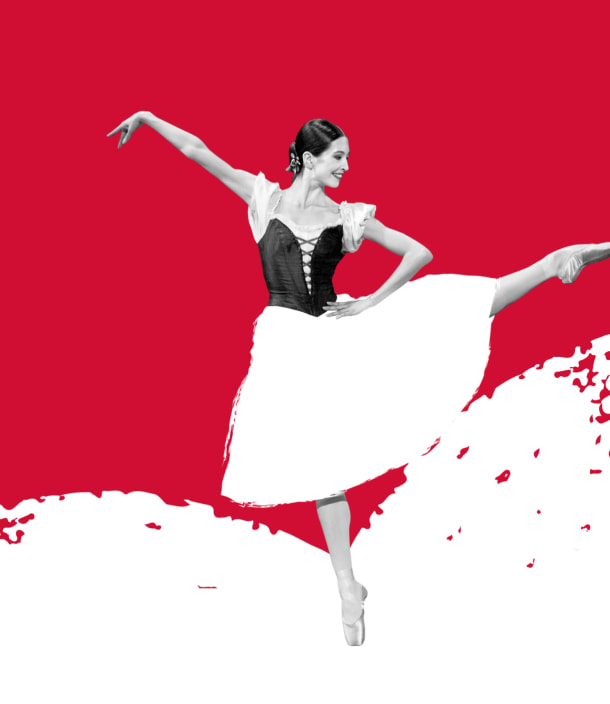
Pierre Lacotte
from 05 Dec 2024 to 04 Jan 2025

Alexander Ekman
from 07 Dec 2024 to 04 Jan 2025

Igor Stravinsky, Maurice Ravel
on 09 Dec 2024 at 8 pm
Musical encounter December 12
on 12 Dec 2024 at 1 pm
load more shows
Become a privileged audience member
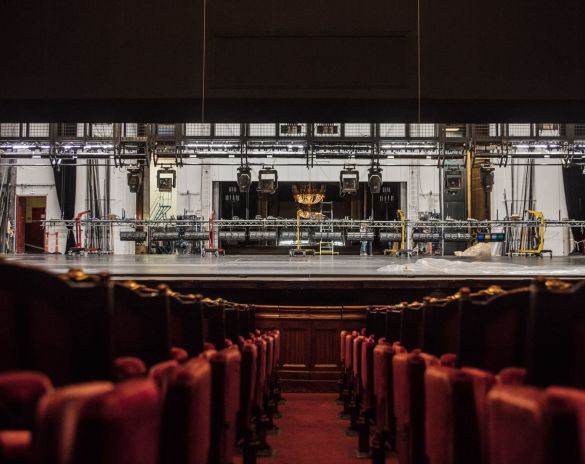
Major partners

Timepiece of the Paris Opera

Principal sponsor of the Paris Opera’

Principal sponsor of the Paris Opera Ballet

Grand mécène de l’Opéra national de Paris

AROP, Les Amis de l'Opéra

Nous contacter
For individual spectators
By telephone on 08 92 89 90 90 (€ 0.35 TTC / min from a fixed station excluding potential cost depending on operator) or +33 1 71 25 24 23 from abroad, Monday to Saturday from 9 a.m to 7 p.m
At the counters of Palais Garnier:
from 10 a.m to 6.30 p.m. At the corner of the streets Scribe and Auber - 75009 Paris.
At the counters of the Opera Bastille:
from 2:30 p.m to 6:30 p.m (130 rue de Lyon - 75012 Paris) from Monday to Saturday (except public holidays) and one hour before the beginning of the performances on Sundays and holidays.
Minimum purchase of 10 seats per performance. Information and advice by email, [email protected], or by phone at 01 40 01 80 54 (Monday to Friday from 10 a.m to 1 p.m and from 2 p.m to 4 p.m).
Immerse in the Paris Opera universe
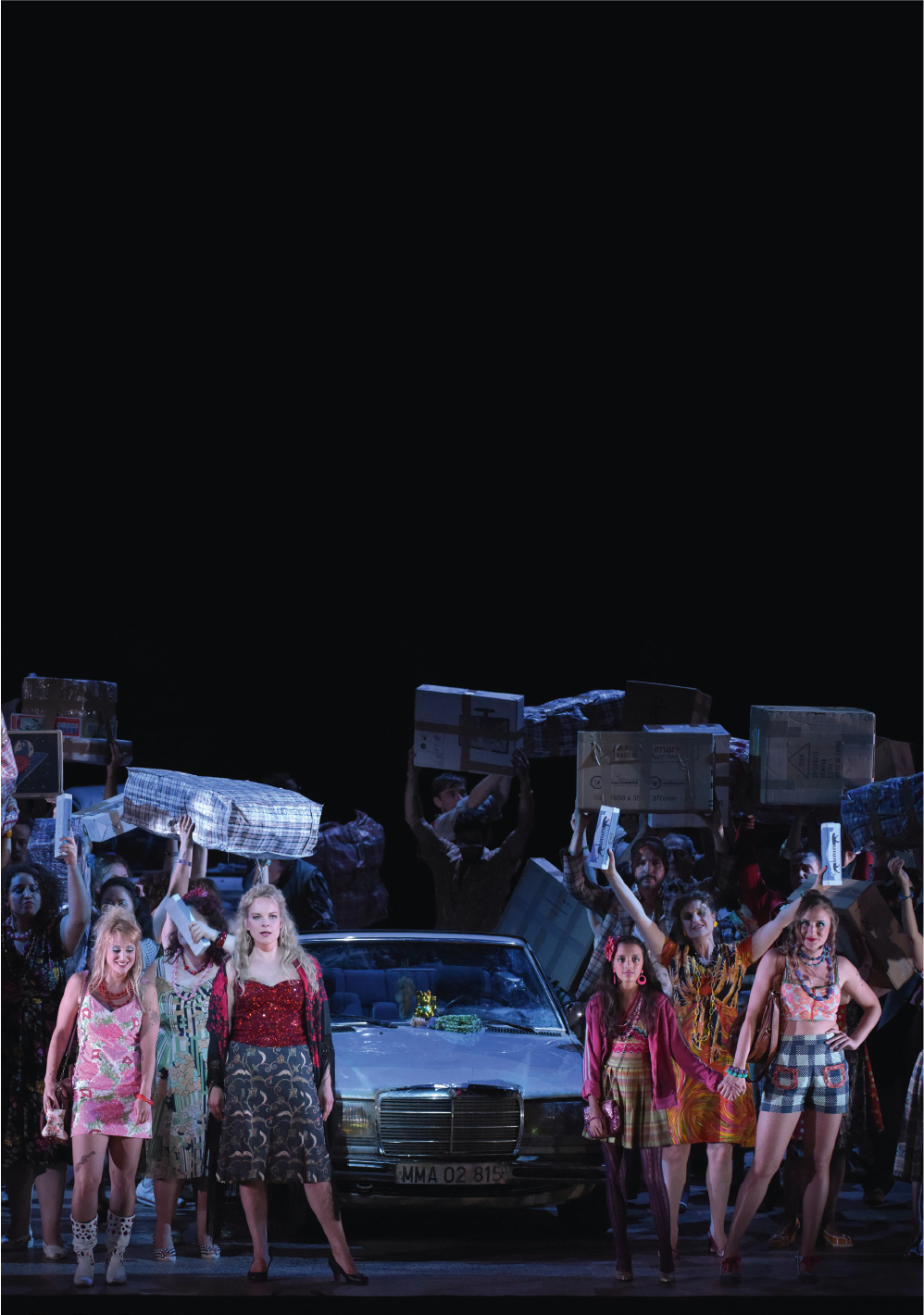
Business Space
Patronage and sponsorship.
- Your support
- The projects
- Your level of engagement
- The benefits you want to enjoy
Your public relations operations
- Premium tickets
- Business club
Rental of spaces and filming
- Rental of space Garnier
- Rental of space Bastille
Licensing program, advertising space and cultural engineering
- Licensing program
- Advertising space
- Cultural engineering
- The “Children dreams” Morning
- The Opening Gala and the “Gala des grandes voix”
Place de l’Opéra 75009 Paris
Place de la Bastille 75012 Paris

Download the application for free Opéra de Paris

Back to top
Tuesday, May 14, 2024

Tourism Review
directories

- Tourism Organizations
The State Committee of the Republic of Karelia for Tourism

Tourism Organizations / Regional Tourist Board
Address: Andropov str. 2, Petrozavodsk, Republic of Karelia, 185028
Phone: +7 (814-2) 79-23-30
FAX: +7 (814-2) 79-24-24
Currently there is no description available. If you are interested to add information, please contact us

IMAGES
COMMENTS
SELF-GUIDED TOUR. The Paris Opera offers you the possibility to discover the treasures of the Palais Garnier's public areas, a master piece of the 19th century theater art architecture. This ticket also gives you access to the current exhibitions (when available). Booking is strongly recommended. Full rate: €15.
Story: The Opera Garnier Guided Tour. Built in 1875 by architect Charles Garnier, the Palais Garnier is the largest opera house in Europe, housing more than 2,000 seats under its elaborate roof. As well as being regarded as the most prestigious of Paris' theatres, the Opéra Garnier is also one of the capital's most emblematic monuments, a ...
Palais Garnier Opera House Tour, Paris. About a month before visiting the Paris Opera House, my niece, her husband, and I ordered tickets online for the guided tour. We chose one of the morning, English-speaking tours. In addition to French and English tours, there are also Spanish-speaking tours with a maximum of 30 people. ...
The Palais Garnier is located in Paris's relatively central 9th arrondissement, more or less directly north of the Tuileries Gardens and the adjoining Louvre Museum. ... either on an individual basis or as part of a guided tour. Opening Hours . 10 a.m. to 4:30 p.m. (September 10th to July 15th); 10 a.m. to 5:30 p.m. (July 15th to September 10th ...
Take an incredible walking tour of the Palais Garnier, Paris' premier opera house, to see one of largest opera houses in Europe. The Opera Garnier, as it is often called, inspired the setting for the famous musical, 'Phantom of the Opera.' During the tour, your expert guide will show you the Grand Foyer, the sumptuous main staircase (Grand Escalier), the Member's Rotunda and the auditorium ...
The Palais Garnier till today remains an iconic symbol of Paris, not just for its magnificent façade and lavish interior, but for the era it represents: a France that had weathered a century of disruption and revolution. Viewed through this lens, Palais Garnier sure feels like a 'sign' of its time. - 90-minute tour of the Opera Garnier with access to the different areas. - English guided ...
Discover a unique and prestigious place in the heart of Paris: the Palais Garnier. Several visits are to be discovered: Intermezzo visit to the Palais Garnier: Through the rooms of the Opera accessible to the public, discover the extraordinary history of the Palais Garnier, a monument of architecture and a total work of art. Length of visit: 1 h 30 - (any time slot other than Belle Époque).
There are daily expert English guided Palais Garnier Tours which departs at 11:00 AM and 2:30 PM. The guided tour takes about 90 minutes and gives you access to all parts of Opera Garnier - the auditorium, gilded balconies, even up close the stage ( the self audio guided tour lacks access to the auditorium ).
Palais Garnier: Our most recommended tours and activities. 1. Paris: Tootbus Hop-on Hop-off Discovery Bus Tour. Experience the best of Paris in just one, two or three days with this hop-on hop-off tour! The 100% clean buses provide a comfortable and convenient way to see the city's top landmarks and attractions, including the Louvre Museum ...
Make your tour in France an exceptional experience! 2. from $276.91. Per group. Paris, Île-de-France. Arc de Triomphe and the Champs-Elysees Discovery Private Tour. 3. from $173.30. Price varies by group size.
The Palais Garnier, ... The one-hour tour, with games (quizzes), is available on iPad, in French, English and Spanish. The little ballerina Zoé guides children aged 6 to 13 (age range recommended) along the way. BOOK NOW. Opéra national de Paris - Palais Garnier. Monument.
Palais Garnier, Opéra Bastille. On-line ticket sales. Plan your visit. Aria Paris Opera Play Shop FR Français; EN English; Home - Opéra national de Paris. Search. Calendar. Home - Opéra national de Paris. Programme & Tickets. Tickets & Events. 23/24 season; Calendar; On your screens;
The Palais Garnier (French: [palɛ ɡaʁnje] ⓘ, Garnier Palace), also known as Opéra Garnier (French: [ɔpeʁa ɡaʁnje] ⓘ, Garnier Opera), is a historic 1,979-seat opera house at the Place de l'Opéra in the 9th arrondissement of Paris, France.It was built for the Paris Opera from 1861 to 1875 at the behest of Emperor Napoleon III. Initially referred to as le nouvel Opéra de Paris (the ...
Practical Guide & Tips for Visiting the Opera Garnier: Address: 8 Rue de Scribe, Place de l'Opera 75009 Paris. Hours: 10:00 am to 4:30 pm, Guide tours in English are at 11:00 am and 2:30 pm. Entry fee: 14 euros for a self guided tour. Not included in Paris Museum Pass. Metro: Line 3, 7, or 8 to Opera. Pro tips: The nearest car park is Place ...
Palais Garnier Water Reservoir and Fish. We still got to see the Palais Garnier fish that live in the "lake" below the stage - it really does exist! Architect Charles Garnier incorporated the water reservoir in his original plans. Palais Garnier sits on marshy land, so there was a problem with controlling the high groundwater.
A: A self-guided tour of Palais Garnier costs €15 for most adults, €10 for reduced tickets, and is free for under-12s and the unemployed. Themed guided tours cost €23 for adults, €16.50 for reduced tickets, and €10 for under-10s. Tickets to operas, ballets, and concerts range from €35 to €300.
The Republic of Karelia, Karjala or Karelia (Russian: Каре́лия, Ка́рьяла; Karelian: Karjala), is a republic of Russia situated in the northwest of the country. The republic is a part of the Northwestern Federal District, and covers an area of 172,400 square kilometres (66,600 square miles), with a population of 533,121 residents. Its capital is Petrozavodsk.
Petrozavodsk is the main city of Karelia, and while many people arrive there to start their further journey around the region, it is worth seeing and walking around. During the city tour, you will see the most beautiful sites of Petrozavodsk and get acquainted with the town's history. 01.
My second trip to Petrozavodsk, the capital of Karelian Republic in the North of Russia, has proved once again my first impression of a very provincial and yet welcoming city. In fact this visit has been one of the most rewarding as far as my job goes. But of course there was a travel part to this journey which was almost completely left out during my first time in Petrozavodsk 2 years ago.
At the counters of Palais Garnier: from 10 a.m to 6.30 p.m. At the corner of the streets Scribe and Auber - 75009 Paris. At the counters of the Opera Bastille: from 2:30 p.m to 6:30 p.m (130 rue de Lyon - 75012 Paris) from Monday to Saturday (except public holidays) and one hour before the beginning of the performances on Sundays and holidays.
Tourism Review. directories. Connecting the Tourism World. Tourism Review Media - the leading multilingual platform since 2006. Our vision is simple - think globally, act locally.